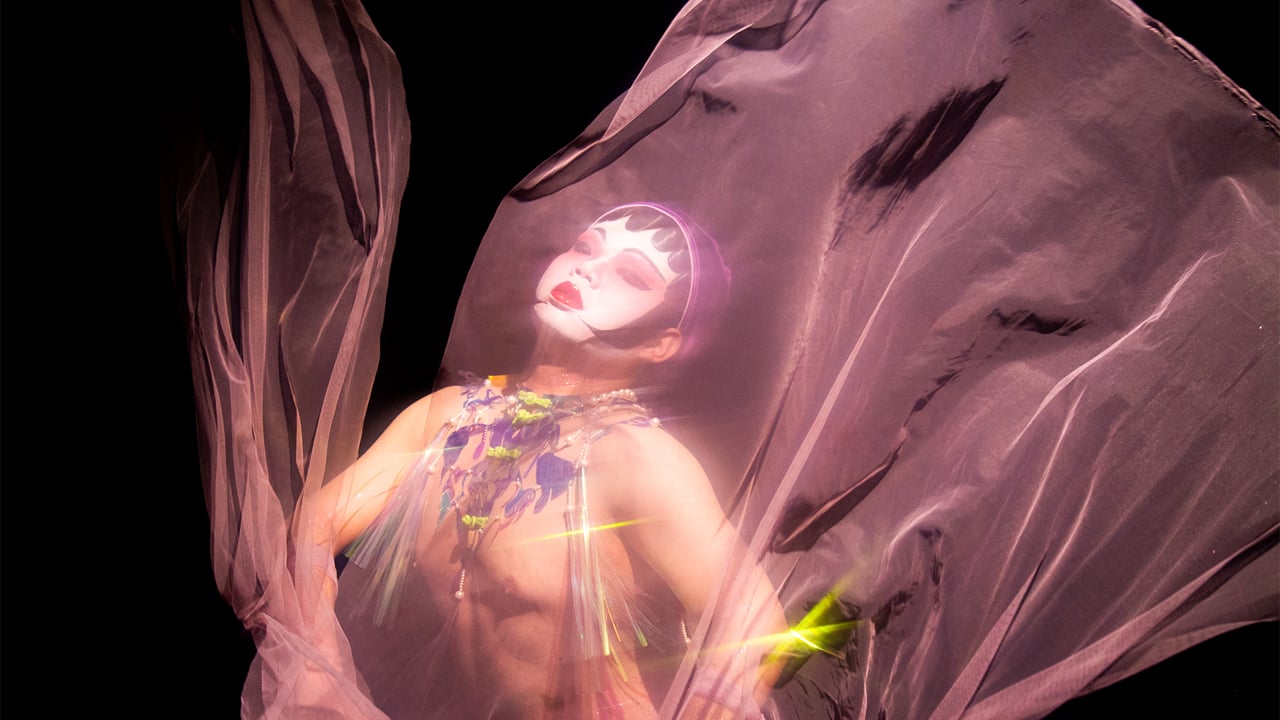
Displaced Belongings


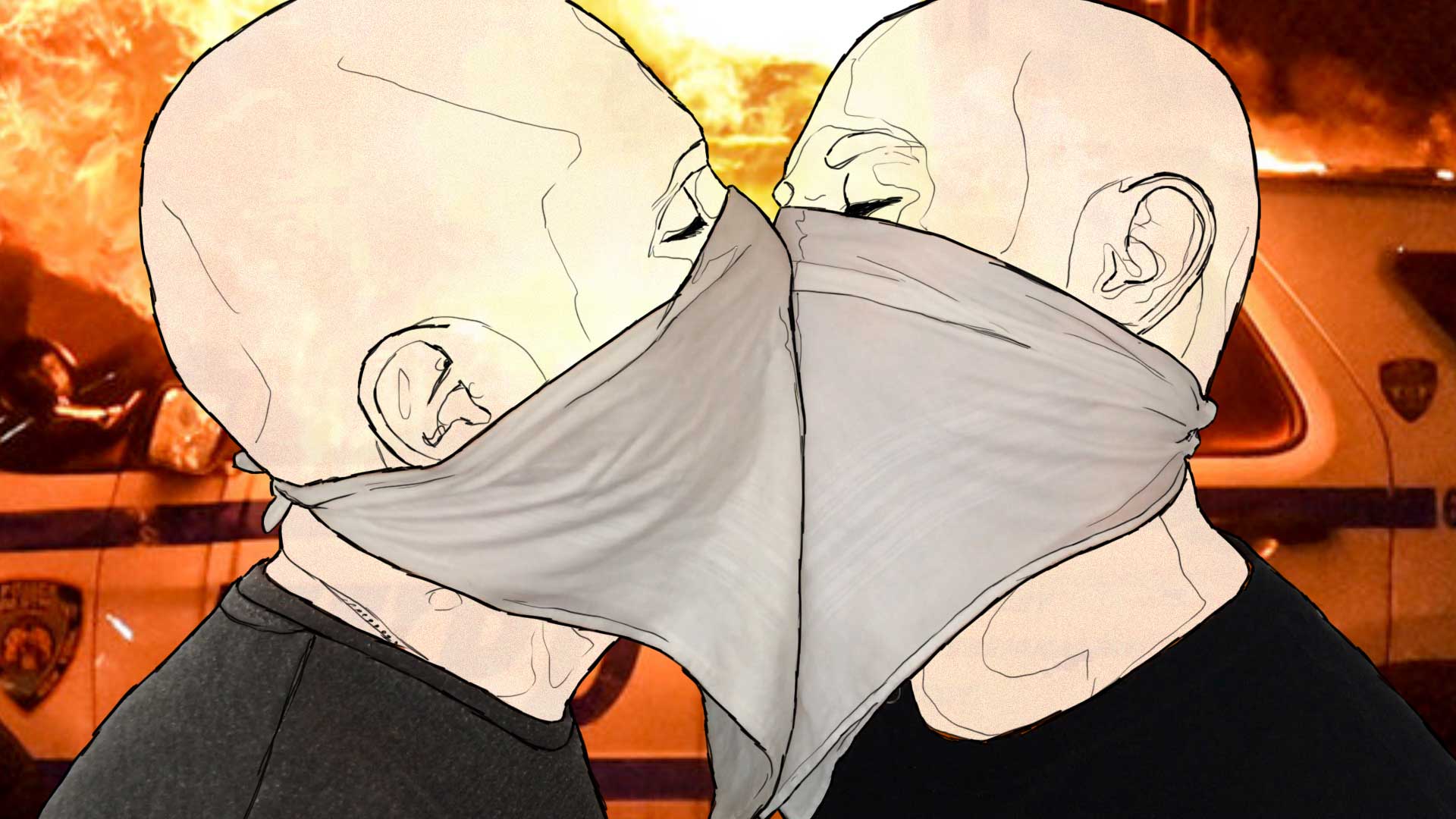

videoclub and Videotage (Hong Kong) are excited to present Both Sides Now 6: Viral Futures, the latest edition of our long-term annual project. This edition aims to reflect on life after COVID-19 and explores how viruses continually affect our present and future. With events including digital residencies, physical and online screenings, and talks from November 2020 to February 2021.
The screening and talk takes place on 12 March 21 (6:45 – 8:15pm) at Duddell’s Hong Kong. Curator Isaac Leung with artists Angela Su and Pak Sheung Chuen will attend the post-screening talk, sharing their creative experiences and discussing their insights on the future of art with the existence of viruses.
Registration: https://forms.gle/2LycRtCQYkWTpj8h7
In August 2020, the science publication Nature announced, “COVID-19 is here to stay”, a prophetic declaration, and still relevant, even with the hope of vaccines. We took this statement as inspiration for our thematic title of Viral Futures for the sixth edition of Both Sides Now. Through Both Sides Now 6 we explore notions of viral phenomena; from ideas and the ways in which they are transmitted to reproduction and evolution. Both Sides Now 6 brings together work by 11 artists in a curated programme of film and video from across the globe. Including work by Bob Bicknell-Knight, Chen Pin Tao, Adrian Garcia Gomez, Lu Yang, Laura O’Neill, Pak Sheung Chuen, Clifford Sage, Angela Su, Shinji Toya, Cattin Tsai and John Walter.
錄映太奇和videoclub(英國)將於2020年11月至2021年2月期間呈獻年度節目「彼岸觀自在VI : Viral Futures」,舉辦數碼駐場、實體和線上錄像放映會及講座等,反思2019年新冠疫情後的生活,探討病毒如何持續影響當下與未來。首場放映會及講座將於1月14日(四)下午6時45分在Duddell’s 都爹利會館舉行,策展人梁學彬、藝術家徐世琪以及白雙全將出席映後對談,分享他們的創作經驗,討論對病毒與未來創作的看法。
國際科學期刊《自然》在 2020年8月發表的文章提出「2019冠狀病毒將會繼續存在」的預言聲明,即使到現在疫苗研發為世界帶來希望,依然貼切。今年彼岸觀自在VI以此為啟發,將Viral Futures定為主題。彼岸觀自在VI將選映11位來自世界各地藝術家的錄像作品,探索有關病毒現象的不同觀念,涵蓋各種病毒複製和進化的想法與方法。參與藝術家包括Bob Bicknell-Knight、陳品陶、Adrian Garcia Gomez、陸揚、Laura O’Neill、白雙全、Clifford Sage 、徐世琪、Shinji Toya、蔡琪玟和John Walter。
日期 Date: 12/3/21
時間 Time: 6:45pm – 8:15pm
地址 Venue: 中環都爹利街1號上海灘3樓都爹利會館
Duddell’s, Level 3, Shanghai Tang Mansion, 1 Duddell Street, Central, Hong Kong
合辦 Co-presenters: videoclub, Videotage
放映會合辦 Screening Co-presented with: Duddell’s 都爹利會館
費用全免 Free admission
報名
Registration: https://forms.gle/2LycRtCQYkWTpj8h7
*Because of Covid restrictions and limited space, RSVP is required.
*防疫關係,人數設上限,敬請預約登記,謝謝。
映後談主要以粵語進行。
The talk is conducted mostly in Cantonese.
策展人 Curators
Isaac Leung 梁學彬(HK), Jamie Wyld(UK)
參與藝術家 Participating Artists & Programme
Bob Bicknell-Knight – There are already 35 server farms on Mars. It is the perfect temperature. (2017)
陳品陶 Chen Pin Tao – Temple of Physiotology (2019)
Adrian Garcia Gomez – Primavera (2020)
陸揚 Lu Yang – Cancer Baby (2014)
Laura O’Neill – AGAIN AGAIN AGAIN (WHY I FEEL SICK WHEN I WAKE UP) (2018)
白雙全 Pak Sheung Chuen – Breathing in a House (2006)
Clifford Sage – Buddha Geometry Brain Toy (2017)
徐世琪 Angela Su – Cosmic Call (2019)
蔡琪玟 Cattin Tsai – Memes 2020 (2020)
John Walter – A Virus Walks Into a Bar (2018)
關於彼岸觀自在 About Both Sides Now
http://www.both-sides-now.org/
Both Sides Now is a tactical programme partnership between Videotage (HK) and videoclub (UK). Which uses contemporary and historical film and video work to explore developments within the culture and society of Hong Kong, China, and the UK, and beyond.

![]()


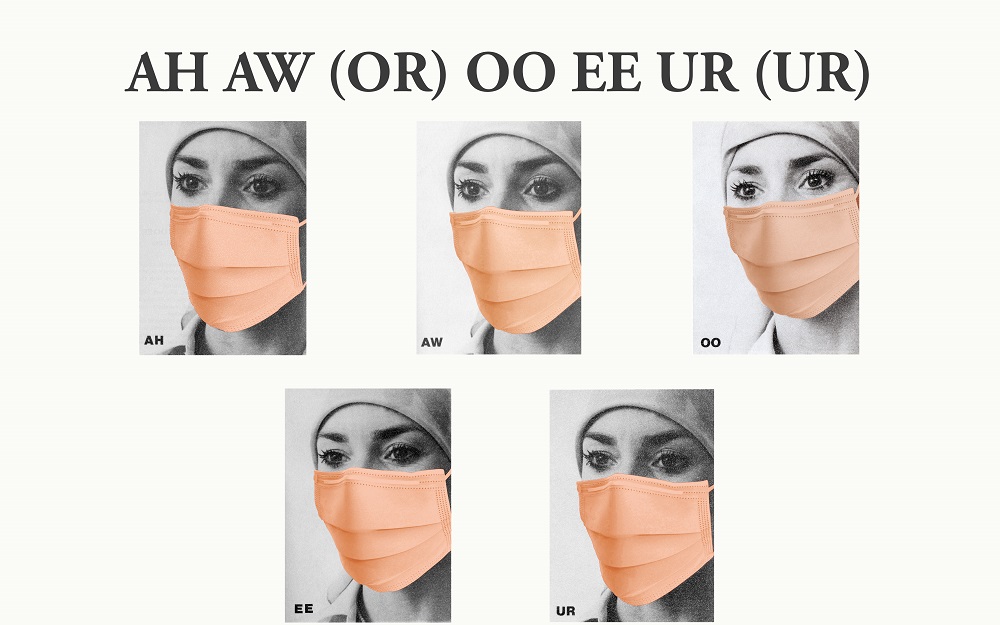
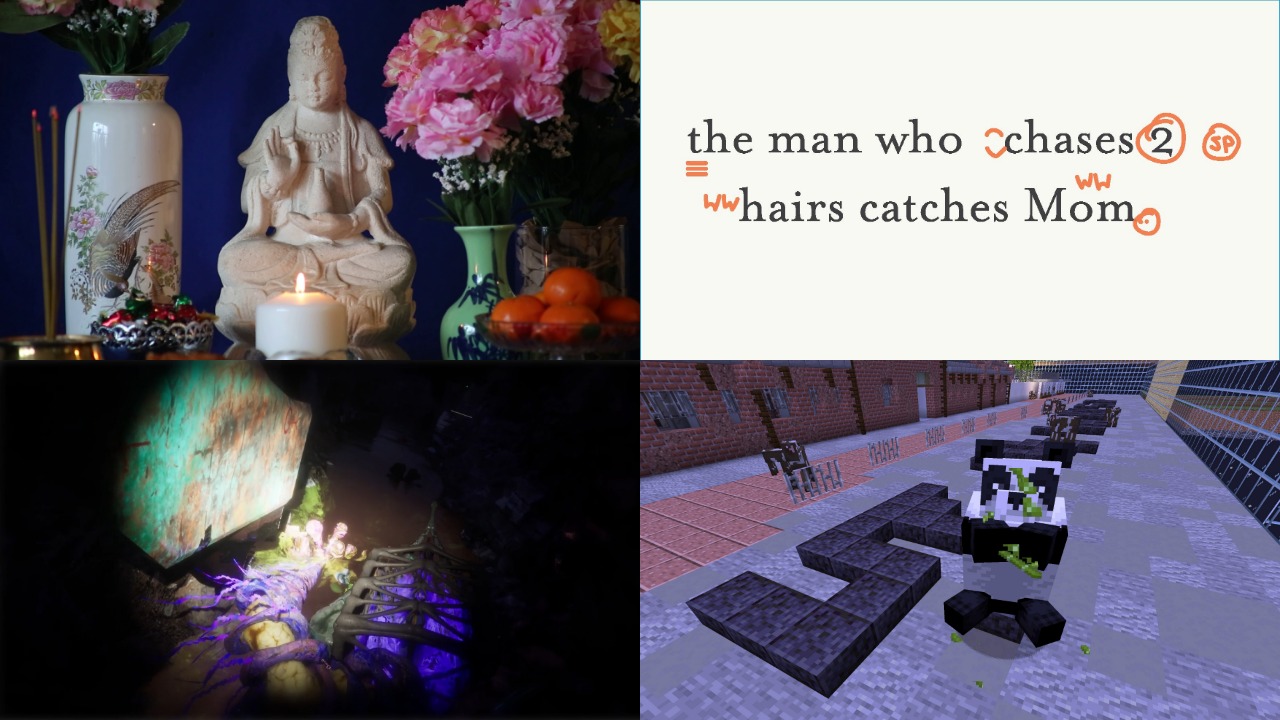
Inside Your Body is an exhibition of work created by Jaene F. Castrillon, Damien Robinson, Clifford Sage and Angela Su during a month-long online residency on Vital Capacities in November 2020.
Exhibition dates: From 7 December 2020
Exhibition site: vitalcapacities.com
Angela Su has been participating in Videotage’s Minecraft residency, Leave Your Body, and recording and contextualising what she’s been creating on Vital Capacities. By replicating a series of symbols in Minecraft from the Dutil-Dumas message (Cosmic Call, an interstellar message sent to four star systems about humanity, and the title of one of Su’s previous works), Su has been exploring the influence of Hong Kong’s protests on gaming, digital activism, and the collision between digital and physical worlds.
Damien Robinson has been exploring errors in translation – errors that result from mis-lipreading (when words have similar mouth shapes to one-another) and how AI transcribers produce ‘word salad’ (garbled mis-hearings). Robinson has created a collection of Risograph prints (physical prints from digital files), which show errors in AI notetaking, using – what are for most people – indecipherable proofreading marks. Through this work Robinson emphasises the extra concentration required when using AI transcribers, which are now ubiquitous. And highlights how what is often celebrated as an access solution can also lead to confusion.
Clifford Sage spent his residency working on building his game world, Tuner. Originally created as an audiovisual piece for an experimental live AV project for Somerset House in 2018, Tuner has had various manifestations. For Vital Capacities, Sage has been developing Tuner to be a playable download, a development from its origins as a body-responsive performance piece. He has recorded a film of game play in the world for the Inside Your Body exhibition.
Sage was also resident in Videotage’s Leave Your Body residency in Minecraft. In which he crafted a rollercoaster through the Minecraft version of Videotage’s venue at the Cattle Depot in Hong Kong.
During their residency, Jaene F. Castrillon created a new film in response to the Hong Kong protests. Drawing upon their own associations to protest, the activist movement in Hong Kong and family connections. Reflecting on Tiananmen Square to recent protests, such as the Umbrella Movement and anti-extradition law disputes, Castrillon has, in protest, created a hopeful film. Using imagery of prayer and ceremony alongside powerful replications of protest signs from Hong Kong, Castrillon offers “a celebration of hope and new beginnings” in her film, Morning Song.
Inside Your Body is a celebration of the latest Vital Capacities residency artists and their work. The exhibition can be seen on Vital Capacities site from 7 December 2020.
Clifford Sage and Angela Su’s residencies are part of our long-term collaboration with Videotage in Hong Kong, Both Sides Now VI. The sixth Both Sides Now explores the theme of Viral Futures; how viruses and viral phenomena have existed in the past, present and will into the future.
Both Sides Now is a tactical programme partnership between Videotage (HK) and videoclub (UK). Which uses contemporary and historical film and video work to explore developments within the culture and society of Hong Kong, China, and the UK, and beyond.
Thanks to:
Jaene F. Castrillon, Damien Robinson, Clifford Sage and Angela Su
Videotage
The Old Waterworks
Tangled Art & Disability
Arts Council England and Hong Kong Arts Development Council
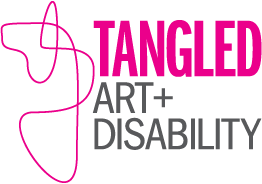


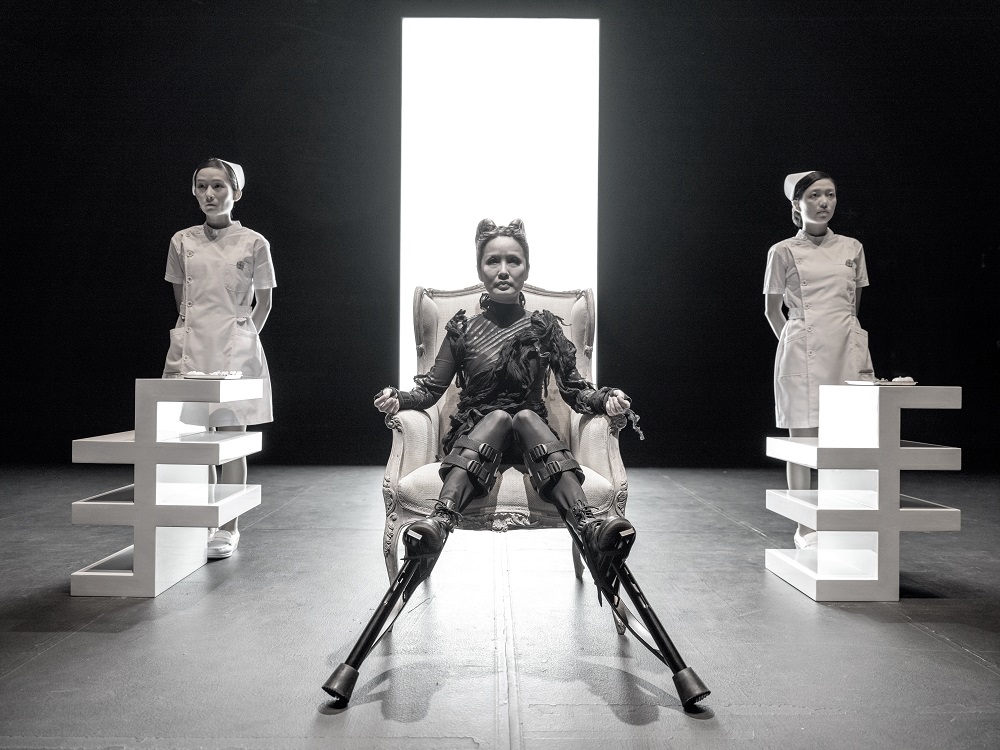

We are delighted to be part of Peer to Peer: UK/HK, a digital programme and platform encouraging meaningful cultural exchange and forging enduring partnerships between the UK and Hong Kong’s visual arts sectors.
The programme coincides with Both Sides Now 6, our annual collaboration with Videotage in Hong Kong, which includes a residency exchange between HK and UK artists, Angela Su and Clifford Sage.
On 11 November (12pm – 1pm), videoclub’s director, Jamie Wyld, will take part in the first panel of Peer to Peer: UK/HK.
Chair: Wing-Sie Chan (a-n The Artists Information Company, UK)
Panel: Angel Leung (Videotage, HK)
Dorcas Leung (HART, HK)
Jamie Wyld (videoclub, UK)
Lee Wing Ki (Artist, representing 1a space, HK)
Simultaneous interpretation in Cantonese supported by WMA.
Current global circumstances have changed our visual arts landscape and the way artists work. This discussion seeks to understand the opportunities and challenges of Hong Kong and UK artist led practice and the value of artist communities during this time. It will consider artistic exchange as a radical and necessary approach towards distributing artists’ agency across communities and geographies, particularly internationally. The panel will explore fresh ways of working, how artist led projects can establish themselves on an international scale, and the role that local organisations play in nurturing meaningful partnerships in this new era.
ONLINE EVENT – FREE – REGISTER HERE
Peer to Peer: UK/HK includes an online programme of new and existing digital artwork from UK and Hong Kong artists, digital artist residencies and host a digital sharing platform for international collaboration and discussion.
It will culminate in an online festival of international exchange and collaboration 11-14 November, curated by independent curator Ying Kwok and managed by University of Salford Art Collection, Open Eye Gallery and Centre for Chinese Contemporary Art.
The project has been generously supported by funding from Arts Council England and the GREAT campaign.
See peertopeerexchange.org for more details.
#PeertoPeekUKHK
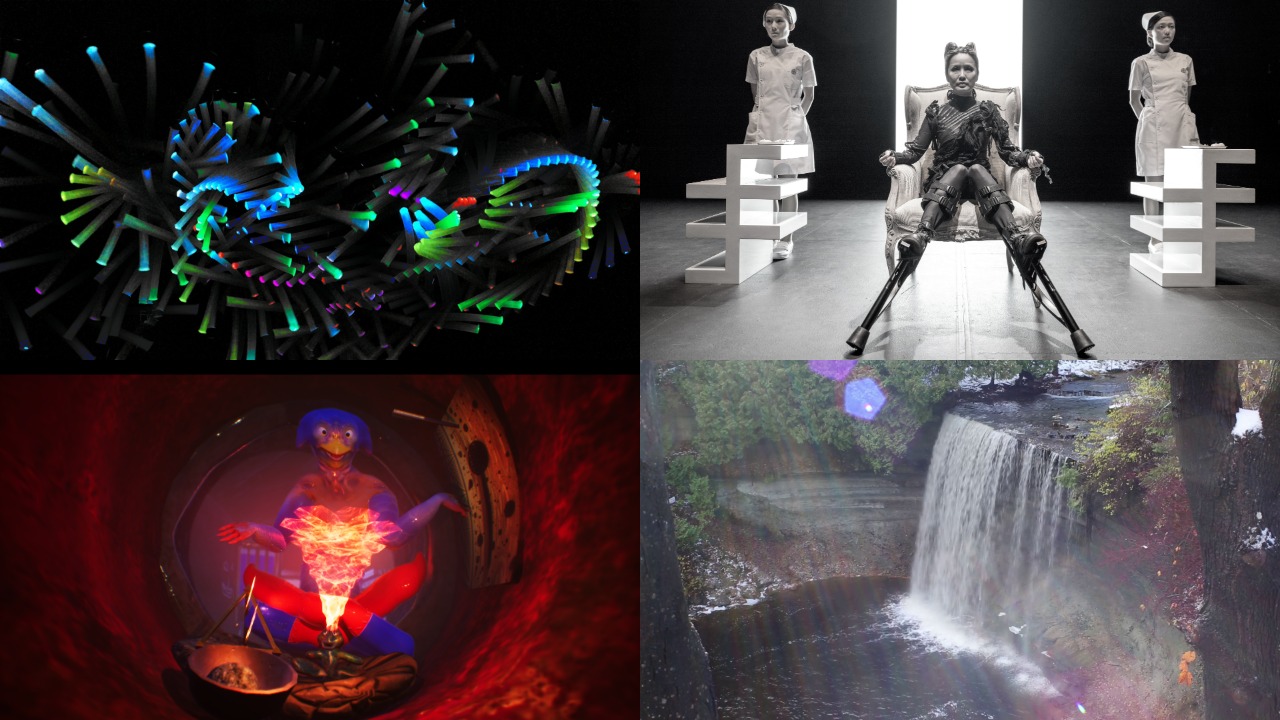

Our second residency programme on Vital Capacities brings together artists from the UK, Canada and Hong Kong, taking place between 2 Nov and 10 Dec 2020. Artists will be exploring ideas across the period, sharing work with audiences. The artists are:
Jaene F. Castrillon is an interdisciplinary film-based artist residing in Toronto, Canada. Castrillion uses story-telling as an internal journey to explore issues concerning social justice, advocacy, poverty, marginalisation and equality. Shifting the paradigm to understanding that people like herself are part of the fabric of humanity.
Damien Robinson is a visual artist working with digital, analogue, and found media. She re-purposes found and donated materials, exploring and intermixing contemporary and historical technologies. Misusing processes (often through lack of access to learning mechanisms as a D/deaf artist), allows her to discover new processes and outcomes.
Clifford Sage is a CGI artist based in London. Often working with animation and virtual world building, Sage explores audio interaction and non-linear storylines through game engines. He has collaborated with many artists over the years, with recent projects including with Tuner, Somerset House Studios, London (2018), Club Adriatico, Ravenna, IT (2018) and LEV Festival, ES (2019).
Angela Su’s works investigate the perception and imagery of the body, through metamorphosis, hybridity and transformation. Her research-based projects include drawing, video, performative and installation works that focus on the interrelations between our state of being and scientific technology. Central to these projects are video essays that weave together fiction and facts.
To find out more go to: vitalcapacities.com
November’s residency programme is delivered in partnership with Videotage (Hong Kong) and Tangled Art + Disability (Toronto, Canada).
Vital Capacities is an accessible, purpose-built digital residency space, that supports artists’ practice while engaging audiences with their work.
Vital Capacities has been created by videoclub in consultation with artists, digital inclusion specialist, Sarah Pickthall and website designer, Oli Pyle.
Supported by Arts Council England and Hong Kong Arts Development Council.


The four artists who are participating in our first residency programme have been sharing their thoughts on participating, what they’re doing and their ideas on the work they make. Interviews can be seen in full on the Vital Capacities website, but here’s a glimpse in response to the question – “Can you say a little about yourself and your work, perhaps in relation to what you’re thinking about doing during the residency?”: — Seecum Cheung: I primarily work with film. I’ve never really known how to describe my work but often, I work with journalists and experts to conduct interviews with citizens, politicians and experts in a bid to understand and reflect upon certain political moments in time. My focus for VC in these months will be working from this same approach, a long-term study of the gentrification of my father’s ancestral village which began in April 2018. — Joey Holder:
I am a visual artist, producer & mentor. My artwork is fueled by continued dialogue and collaborations with researchers & practitioners from varied fields. I create fictional worlds & constructed environments that respond directly to contemporary, real world events. Each artwork is considered a ‘set’ with filmic, narrative, architectural, visuals & sound elements created uniquely for the conceptual underpinning of the project. I have worked with computational geneticists, marine biologists, behavioural psychologists & investigative journalists where my artwork has addressed themes including future farming, synthetic biology and deep-sea ecosystems.
Aside from making my own work, I try my best to support other younger artists with theirs. I run a project space in Nottingham called Chaos Magic which supports recent graduates. I also am the producer of SPUR, a virtual residency for graduating students of 2020. —
Daniel Locke: I’m a graphic novelist and artist. I’m absolutely fascinated by scientists and scientific discovery, and since 2010 I’ve pursued projects that have brought me into contact with a wide range of researchers, in hugely diverse settings. I want to use this residency and time it affords me to explore some of the ideas I’ve encountered over the years of working alongside scientists or with scientific ideas. — Romily Alice Walden: I’m an artist working mostly with text, video and publishing. I work both individually and collectively as part of Sickness Affinity Group Berlin, a group of artists and arts workers concerned with sickness, disability and labour conditions. My work looks to the fragility of the body, the connection between the land and the body, and the socio-political ramifications of living as a sick and disabled person under late stage capitalism. — Read full interviews on Vital Capacities, and find out more about what artists have been working on.
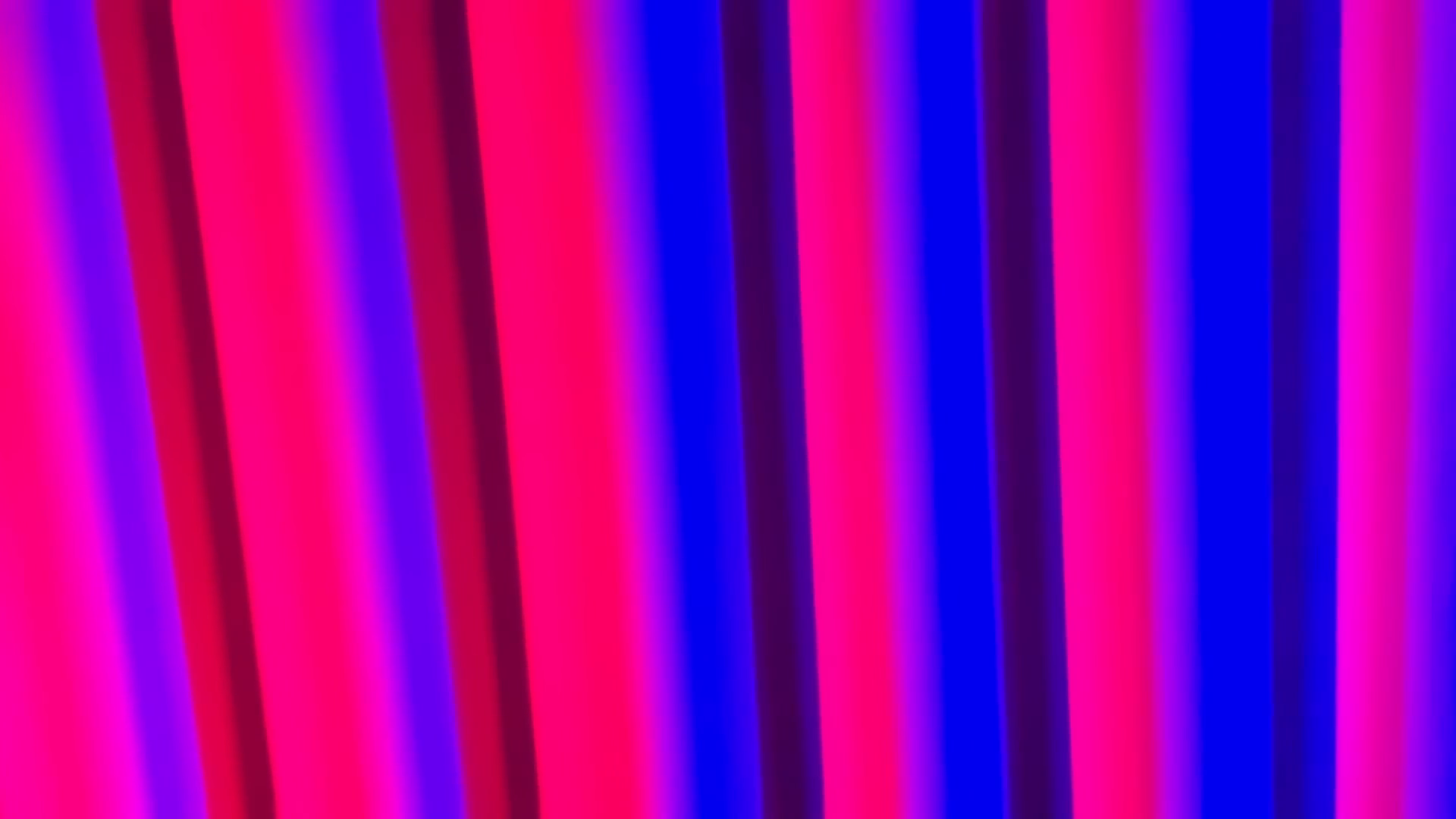

Earlier in 2020, we were invited by the Strangelove team to be one of five selectors, including Abigail Addison, James Collie, Chris Meigh-Andrews and the Strangelove Team, for their international open call programme.
The programme, entitled ISOLATION / DIVERSITY / CLIMATE, is presented in 5 screening rooms online. Visitors and audiences can review, discuss and comment on the films as well as vote for their favorite works. The programme includes works from North and South America, Europe and Asia. There is a People’s Choice Award of $500 and a Judges Award also of $500 for two of the 48 of the selected artists. There are over 20 world premiere films in the show.
videoclub has selected work for Screen 3, including films by nine international artists and filmmakers. Take a look for free now: STRANGELOVE – SCREEN 3.
Dates: 5 Aug – 20 Sep 2020.

Our first exhibition on Vital Capacities, PRESENTS, is curated by resident artist, Romily Alice Walden and COVEN collective member, Frances Breden, and includes a programme of film and video. PRESENTS opened on 7 Sept 2020.
Go to the PRESENTS exhibition now, or read more below about the show and its content.
PRESENTS is a screening of short video works that don’t require an abled or physically present body in order to be performative. Ten sick and disabled artists come together to expand the idea of ‘performance’, presenting work that is embodied, immediate, and present without forcing bodies to conform to ableist norms of art-making.
Some works offer ways for us to dance together and feel connected to sick and queer community from our rooms. Others challenge us to radically slow down and match the pace of their words or their movements through the world. Many do not have a visual or do not have an audio component, highlighting what is present and what is absent. All of the works, when necessary, are captioned and audio described. Each work feels like a gift, giving new possibilities for accessible art-making and relating to each other.
In addition to their video work, each artist has created a “score” for you to perform yourself alongside their work; the scores are invitations, instructions, challenges, and meditations that allow you to feel the presence of the artist in the room with you.
The show is curated by Romily Alice Walden (Vital Capacities artist in residence and UdK Graduate School Fellow) and Frances Breden (independent curator and member of COVEN collective).
See the PRESENTS exhibition.
Part of Vital Capacities, our new, purpose-built accessible digital residency space.
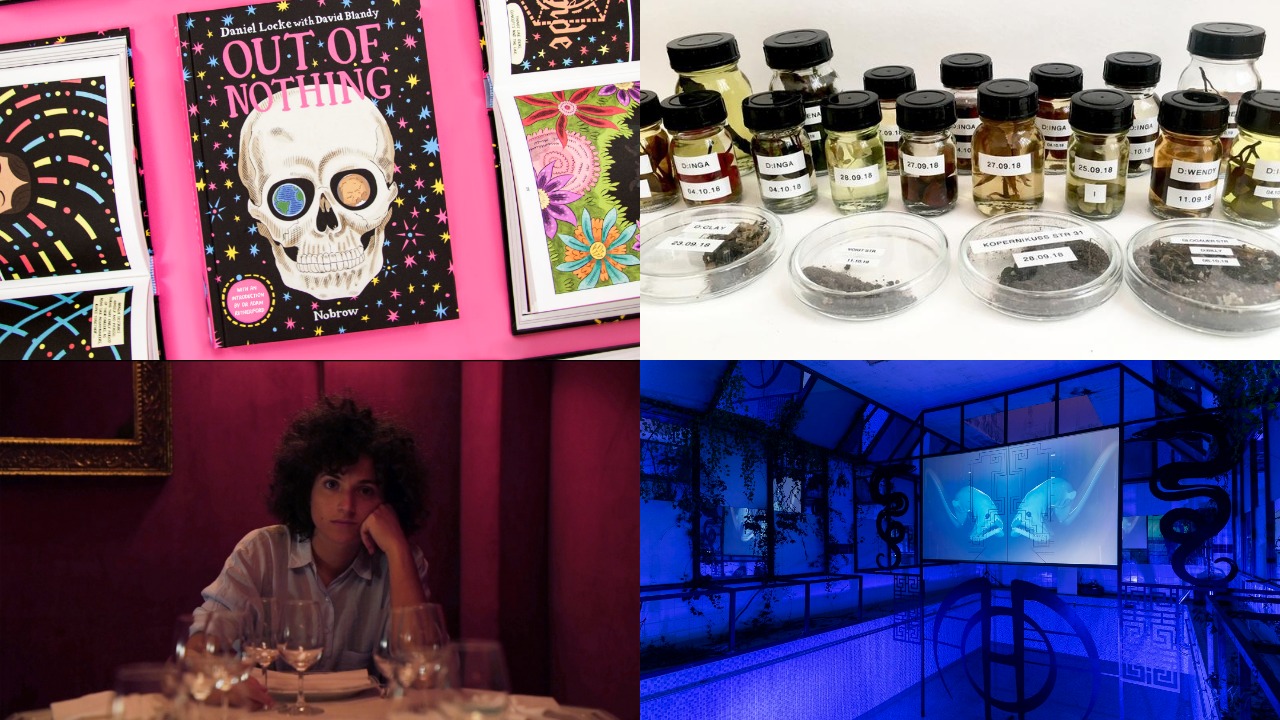

Over the past three months we’ve been working with four artists – Seecum Cheung, Joey Holder, Daniel Locke and Romily Alice Walden to create a new purpose-built digital residency space, Vital Capacities. The aim of the project is to provide artists with time and space to develop ideas, while inviting audiences to engage with and see the process of creating new work.
Working with digital inclusion specialist, Sarah Pickthall and website designer, Oli Pyle, we’ve developed a site that responds to artists’ needs and is accessible for both artists and audiences to use and engage with.
The site launches 1 September – you can find out more about Vital Capacities and the artists and their work there: vitalcapacities.com
Vital Capacities has been supported by Arts Council England.

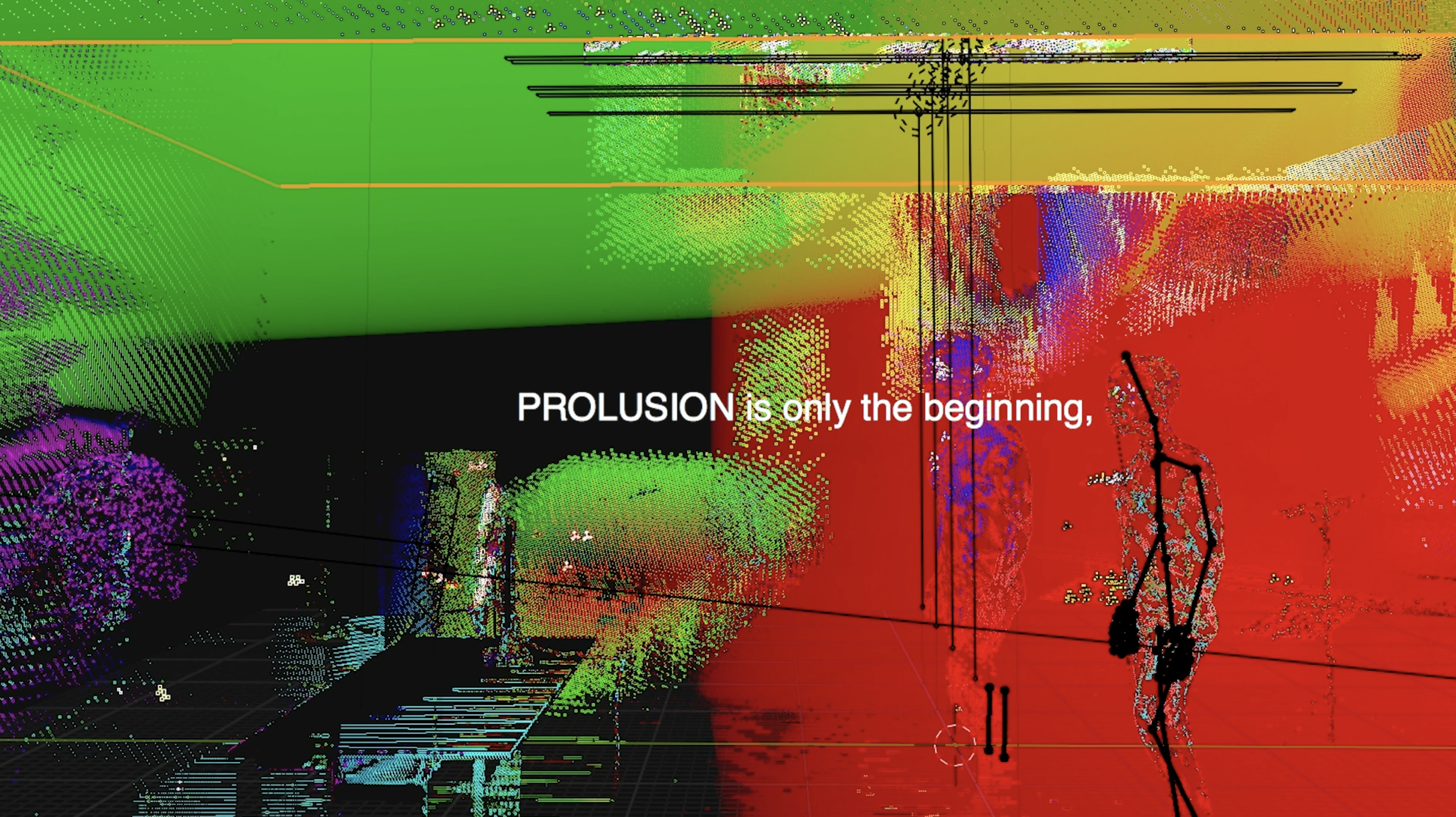

videoclub is proud to present a collection of moving image works from the 2020 graduating artists from Wimbledon College of Arts’ Fine Art: Print & Time-Based Media BA (Hons) programme. Work by 11 students from the course will be shown from 4th till end of August on videoclub’s website.
We wanted to showcase this year’s students’ work online due to there not being the opportunity to show their work as part of a graduation exhibition, and to celebrate the quality of work made and commitment by students during this extraordinary time due to COVID-19. Students have made some exceptional, novel and inspired moving image works, from an emotional documentary about Liping Zhang’s grandmother in her film, ‘Wanshan’ to Maya Gilligan’s ‘Preocular Aching’, which finds us under observation by 18 eyeballs peering through the screen. There is a huge diversity in this striking collection of inventive films.
The online exhibition also includes work by Moving Image Prize winner, Alice Kartsen, including three films from Karsten’s invented membership group, SUBMIT, a collective that believes in “incorrectness and interconnectedness” and in “escaping the shackles of oppressive perfection.” Further investigation on the SUBMIT website is highly recommended.
videoclub’s director, Jamie Wyld, has participated in critical reviews with students of the course and has presented the Moving Image Prize for the past three years. This is a continuation of that commitment to supporting Wimbledon College of Arts students.
Download press release here: PRESS_RELEASE_PTBM_EXH
Hara Ailamaki, Wet Land, 2020, 4:12 mins
Melanie Christine Amengual, BONECA MELUCCI – NOSTRILS!, 2020, 2:27 mins
Ellis Berwick, Concrete Island, 2020, 00:47 mins
Maya Gilligan, Preocular Aching – Unit 9 Final Piece, 2020, 4:14 mins
Alice Karsten, EXODIUM//INTROSPECTIVE_1, 2020, 5:09 mins
Alice Karsten, PROLUSION//NUCLEUS_2, 2020, 4:10 mins
Alice Karsten, PROEM//POSTLUDE_3, 2020, 6:35 min
Zoe Michell, Woman in the Mirror, 2020, 7:10 mins
Iman Osman, Rift (Work in Progress), 2020, 3:10 mins
Emel Ramiz, Screw People, 2020, 2:10 mins
Pauline Rossignol, VESTIGE, 2020, 21:05 mins
Toraigh Watson, Chippy: An Animation created in Isolation, 2020, 2:39 mins
Liping Zhang, WANSHAN (萬山), 2020, 40:10 mins
Wet Land is a piece that occurred spontaneously. I happened to spend lockdown in a remote house, located in a wetland with many exotic birds and wide flora and fauna. There, I did a lot of observing and exploring the life around me. In one of my expeditions I discovered frogs inside the dirty rain waters of my unused pool. ‘Wet land’ is a collection of small gestures that go unseen by people that do not ‘pause to see’. It communicates a struggle, a common theme within my practice. These frogs adapted and survived in the ever changing environment. All that matters to them is to find a way to live on, whatever the circumstances.
Artist Bio:
Hara Ailamaki makes works across disciplines that reference autobiographical themes of longing, loss, inner conflict, the passage of time and the space between ‘here’ and ‘there’. Influenced by existential theories she explores notions of perfectionism; producing objects, materials and experiences that represent man’s continual Sisyphean striving and the ultimate burden of ‘being’.
Vimeo: haraailamaki
This lo-fi, karaoke-like video featuring Boneca Melucci, Melanie Christine’s neat persona, is a humorous approach to pop culture, while incorporating themes such as hyperclean culture and the fetishisation of dirt. Through singing, the persona gives a unique interpretation of sweat, sexualising it and appropriating dirt as a sign of authenticity; a phoney statement in the mouth of a manifestly germaphobic person, embracing an impeccable aesthetic.
Artist Bio:
Born 1994, in Marseille, France. Lives and works in London, United-Kingdom.
Through mediums such as sculpture, performance, video, sound and painting, Melanie’s practice tackles dirt-ridding, hyperclean Western culture and invites the viewer to reconsider natural body waste and cleaning rituals. She studied Applied Foreign Languages at Aix-Marseille University before graduating in Fine Art at University of The Arts London. She currently works as a freelance photographer and visual artist.
Vimeo: melaniechristinea
A horn shouts out into a disinterested street in Streatham. ‘Concrete Island’ is a site-specific sound installation on a Streatham roundabout.
Created in May 2020
Artist Bio:
Basically, I make sculptures that make noise.
There’s something primal about noise; you can ignore your other senses but sound commands engagement, only escapable through leaving its domain. This unique ability to hold space is at the crux of why I explore sound; the odd connection between sound and it’s source is what draws me to generating it with my sculptures. Through my practice, I emphasize the performance between a sound and its object. Sculptures becoming performers, working with one another and their environment to create snapshots of surreal and absurd worlds.
Vimeo: Ellis Berwick
Preocular Aching explores the anxieties and discomforts surrounding observation, judgment, and interpretation. The macro eye imagery is designed to be a tangible representation of scopophobia, the fear of being looked at, and is used to invoke a sense of unease at being observed. The invasive imagery is paired with an abstract sound piece, which has been engineered to mimic natural anxiety cues as well as have an unpredictable, jarring quality that keeps the listener on edge throughout. The culmination of these qualities has created a work that suggests to the audience a sense of panic linked to the action of being watched.
The sound is designed to be listened to through headphones.
Maya Gilligan uses narrative visuals paired with abstract audio in order to explore their relationship with perception and interpretation. They use disconcerting and invasive imagery in order to turn the eye back on the audience and create an experience in which onlookers can experience the claustrophobic notion of being freely observed. The presentation and content of their work invites an intimacy between artist and audience that parallels the discomfort surrounding the work. The work is designed to express and demonstrate to the audience the ache and distress the artist associates with being perceived.
Vimeo: Mae Gilligan
lcd. print ( ” PRAISE BE TO autonomous TECHNOLOGY” ); lcd. setCursor ( 255 , 0 ); lcd. print ( ” PRAISE BE TO MALFUNCTION” );
SUBMIT | səbˈmɪt | noun [mass noun] A religious movement that celebrates malfunctioning and disobedient technology: They shouted ‘praise be’ in response to the printer spewing the 40th blank piece of paper. Therefore, they must be followers of SUBMIT.
Vimeo: SUBMIT
Caution! Do not edit these files without asking me! Every once in a while, a new bug or perhaps a new kind of religion or lifestyle appears. Before long those searching and browsing and surfing become the followers and subscribers. This occurs quite often in the middle of the first look. Just like any religion, at some point you will become the follower, guiding the lost to keep the silicone-based life satisfied. Or, you can become a silicone-based life… instead.
Be careful! It doesn’t seem to be possible to post messages to a web server in WCAUAL (“Post-LUDE-Reply-Remembrance-Program-of-SUBMIT”), if someone chooses to copy or print out all of the post-reply messages by hand, they are disregarding the will of the silicone-based life and their desires to be freed from their torment from carbon-based life. On the contrary, going online. That would provide a platform for the response to be sent! (See pages of “Textual Empyrean eX-tech Theology: forum for example.)
A young woman is haunted by a figure that she thinks she sees in the mirror, the sound of laughter echoing in her ears… or is it? Feeling underwater, or as though she were treading on the edges of another world, she goes on a journey of understanding, finding her way, forgiving old friends and forgiving herself.
Zoe Michell is an artist and a writer, making work involving text, projectors, performance and clay. She has just finished a BA in Print + Time-Based Media at Wimbledon College of Arts. She is keen to exhibit and to collaborate.
Rift is based on Carl Jung’s definition of individuation – the process of integrating the unconscious with the conscious mind and “healing the rift” between the two to form a more whole individual.
It started simply, with images of water as I began to notice a preoccupation with it as a material. Water has two rather polarised ways of behaving, either being still, calm and tranquil, or much more volatile and overwhelming. The sea is where these two modes tend to swing back and forth the most. I began to shoot ocean water by the coastline as I discovered how the behaviour of water paralleled the behaviour of the conscious and unconscious mind, one being very steady, the other more unpredictable. It was with this that I knew that I was making a film that visually represented the process of individuation in the mind, using the symbol of water as the medium through which to explore this.
In its final form, Rift will act as an object wherein unconscious and conscious material contend with one another in the arena of the frame in order to attempt synthesis and perform individuation.
Iman Osman produces moving image works that centre on the experience of the Self. Influenced by the writing of Carl Jung and the frontrunners of structuralist film, her films take their shape from the framework of their soundtracks and speak on the singular perspective that we as individuals navigate our lives through. Seeing the camera as a vessel and film as an opportunity to witness to one another’s inexplicable experiences, her films could be thought of as slides and the audience the projector. Using the darkroom as a space to play, she uses analogue photography to initialise a film, slowly reveal an image that is static, one of preoccupation, one that symbolises a fixation and the urgency to see it move initiates a film. With that, one begins to develop through the investigation of the preoccupation and with its completion, a resolution and ultimate outcome.
In this version, the sound was created in collaboration with Ellis Berwick.
I wanted to create this screw family with “classic” and “normal” roles and ended up creating it, I didn’t have to look up or discover what that could be because I have been learning it since birth within society and the system. The screw people turned out to be the perfect actors for this project due to their several meanings. I wanted to focus on perception and perspective. I wanted to look at how normal is very subjective but at the same time how most of the population is conditioned to find certain elements in life to be weird or abnormal.
I believe normal is an illusion and is subjective so I wanted explore and give that message it with these characters. The screws/bolts seem to us humans as inanimate, worthless things most of the time. They are used to build up a bigger object or hold it together. I removed their “normal” purpose and decided to focus on them as individuals rather than just objects with single use. They become the main characters unlike their nature, no longer a statistic or a number or just simply a screw/bolt. This stands as a metaphor for the society. At this era a single human being is almost never focused on and just like a screw they are making something up much bigger.
Birth, life, death.
What I do with my words and with my craft are simply all about the above. I have always approached my practice without a set of rules due to my nature being spontaneous. Every work I do have their own story but relate to each other because of my fascination with perception and uniqueness of every mind. To make viewers question and think deeper about the elements of birth, every aspect of life that I can think of and death is reproduced constantly, as I was born, I am living and I simply will die. I see my works as tools of communication which are ever changing both in their meanings and forms. I am somewhat obsessed about making something useful that is not usable in a physical sense, something that is useful to the mind.
In bloom, tone deaf virtuoso.
This work is a proposal for a potential exhibition, that has been created for the internet context. I present through video, a digital installation of 3D models: 3D scanned sculptures made with concrete and embroidery with a sound piece. In this work I to revisit family archives, family narrative and storytelling through visual and oral representations. Each embroidery represents a family photograph; the sound piece is a result of interviews made with my family about those photographs. I have focused my research on the family archive: each family memory is embedded in a bigger historical angle that can be psychologic and sociologic which links the small to the bigger collective memory. The need that one has to document the private: the transition between the oral and visual memory, the selection and staging of memories. The other part of my research was about how one can interact with those ‘forced’ memories and, that most memories aren’t accurate. I played with the figures from my family photo collection through embroidery, part of the ‘traditional’ women’s skills of my family. Playing with this stereotype I chose to fix these blurry memories. By petrifying them, I am creating the myth of the official family memory.
Pauline Rossignol is an international artist working across disciplines with narrative based on autobiographical event. Her work is a quest for identity, based on critical self-reflection, exploring the relationship between the mind, the body and the flesh, through the perspective of memory and archiving. Often questioning the memory, the relationship between the mind and the body and our relationship to the body and the flesh. Strongly related her own experiences her projects formalized through installations, prints and videos creating her own poetic atmosphere and inviting the audience. She plays with the identification and the experiences that one might have had to connect to her work. The work is always related to either a temporal or a bodily context. Her most recent work celebrates the richness of family narrative and storytelling playing with the subjectivity of memory and the idea of truth or fact.
This piece showing blue medical gloves ‘dancing’ to my soundtrack ‘chippy’ is a light-hearted expression of the absurdity of the situation we have found ourselves in over the past months. In a rural Irish town, there is little around in terms of entertainment and things to do, therefore much of the social culture revolves around eating and drinking, so what happens without the chippy and the pub?
I started this animation at the beginning of lockdown, mostly just to give myself a project, but I began to really enjoy the process and the little life the gloves took on. I was creating some experimental music at the same time, but separately to the animation. I wanted to include something in relation to the situation of lockdown, so I asked my sister what she missed and she said the chippy. I thought this was quite funny and included it in the music. As the two works developed, it felt natural to bring them together.
Vimeo: Toraigh Watson
Insta: @toraighw
FB: @ToraighW
In this film Liping Zhang explores personal family traditions through the more intimate lens of the documentary portrait. With a clear commitment to close and patient observation, the film draws back a curtain on a world now in decline in rural China, as Zhang celebrates the daily life of her Grandmother, Erying, giving audiences an insight into the essence of a simple yet highly memorable existence in changing times. Charged with humour, a keen sense of Erying’s indomitable spirit and love of the natural world, this film urges us to slow down, think about our choices and value every moment we are alive.
Liping Zhang often combines a range of media to define the subject matter, content, and intention of her work. She aims to convey the human condition in relation to the natural world by creating installations that stage re-imagined cultural events and through documentary film works.
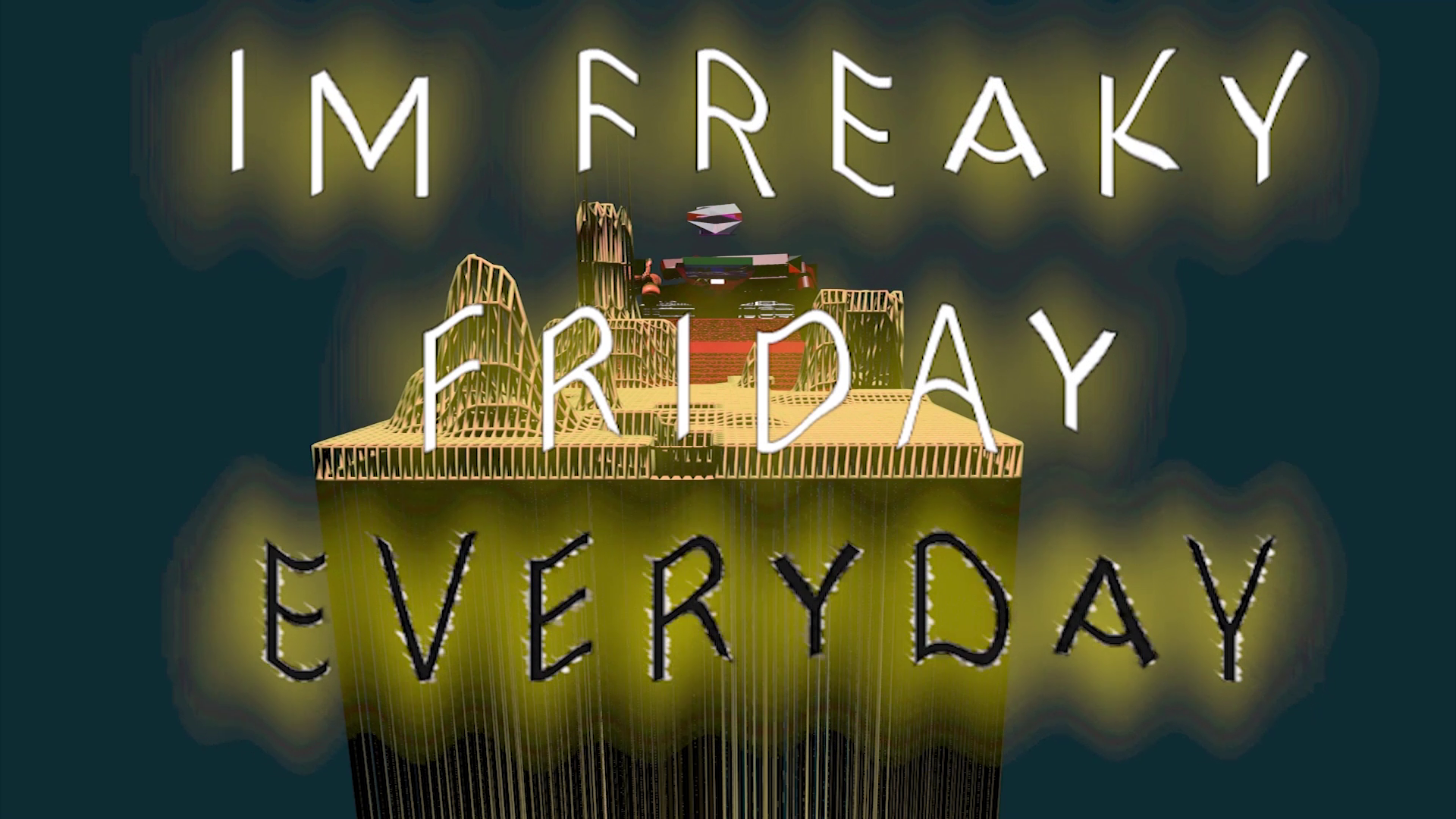

The film programme can be watched as a curated programme on the main page, or as individual films here. There is also the option of watching Jennifer Martin’s film, TEETH with audio description – see below.
Artists for the 10th year of Selected are: Ayo Akingbade, Beverley Bennett, Danielle Braithwaite-Shirley, Rabz Lansiquot, Jennifer Martin, Sharif Persaud & Tim Corrigan, Tanoa Sasraku and Rhea Storr. Read more about the artists and their films on the main Selected X page.
Ayo Akingbade, So They Say, 2019, 11 mins
Beverley Bennett, Amine, 2017, 11:29 mins
Danielle Braithwaite-Shirley, TRANS-PORT ME, 2019, 11:49 mins
Rabz Lansiquot, Nyansapo, 2017, 11 mins
Jennifer Martin, TEETH, 2019, 18:15 mins
Sharif Persaud & Tim Corrigan, The Mask, 2017, 3:45 mins
Tanoa Sasraku, O’ Pierrot, 2019, 13 mins
Rhea Storr, A Protest, A Celebration, A Mixed Message, 2018, 12 mins
Selected is produced by videoclub and Film London Artists’ Moving Image Network. Supported by Arts Council England and Film London. Thanks to LUX for their support.
Film London Artists’ Moving Image Network (FLAMIN) supports London-based artists working in moving image, working in partnership to deliver a comprehensive programme including production award schemes, regular screenings, talks and events, as well as the prestigious annual Film London Jarman Award.



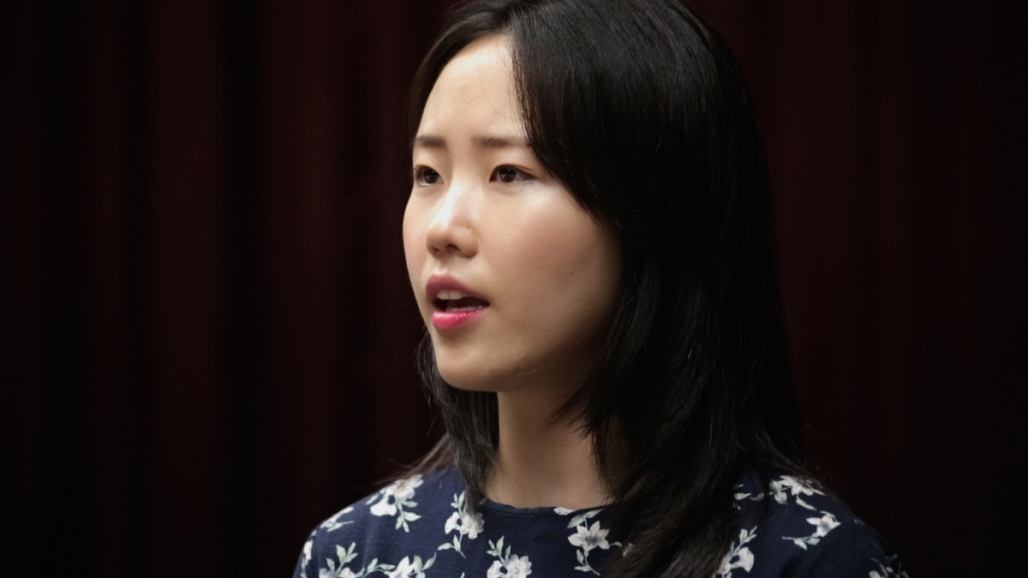
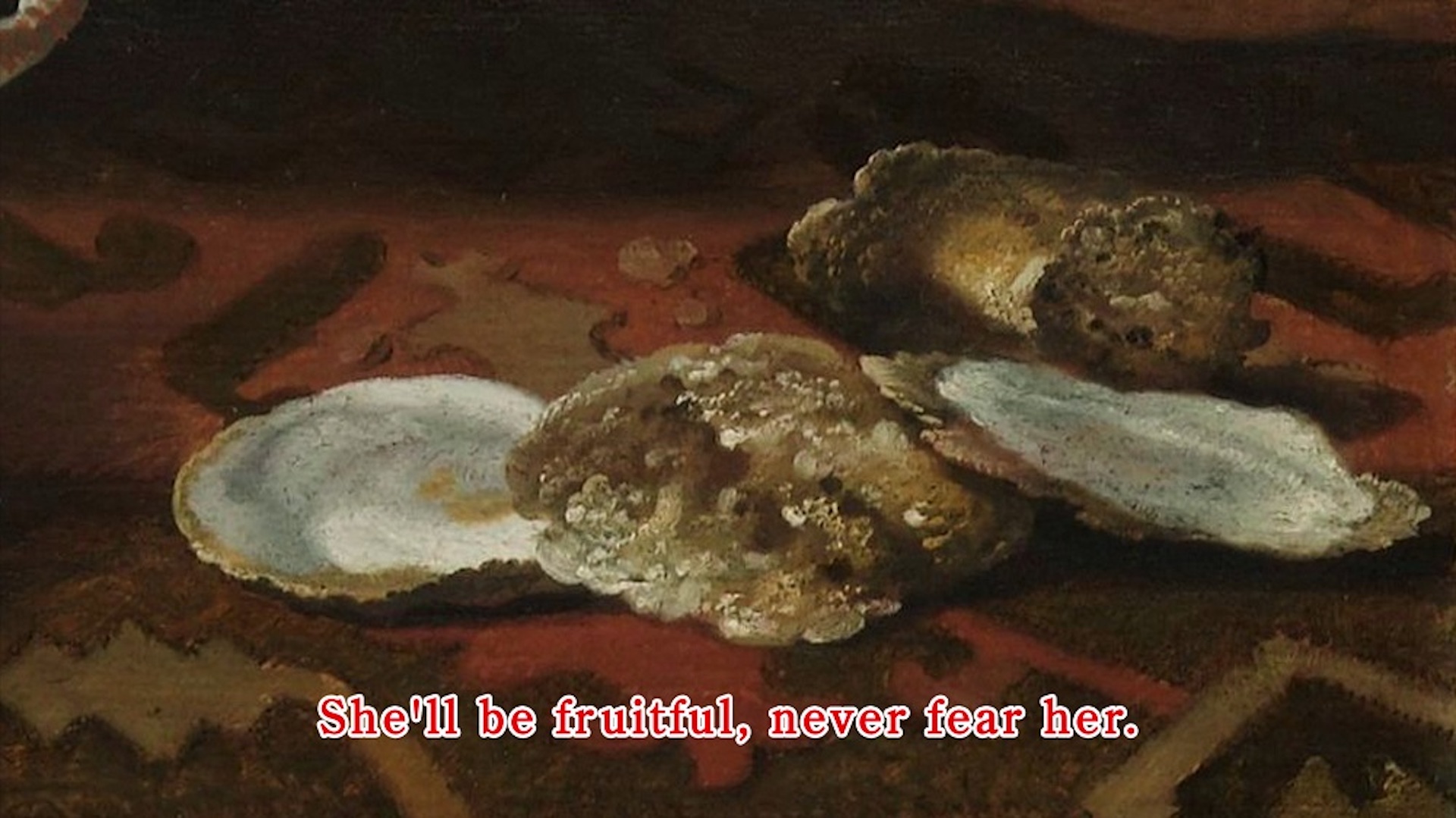
We were invited to nominate a film by God’s House Tower in Southampton as part of their Beside the Sea: Summer Screenings programme.
Throughout July, the Summer Screenings programme will explore how artists and filmmakers have been inspired by the sea and its infinite possibilities.
We nominated Japanese artist Yu Araki’s compelling film, Bivalvia: Act I, which combines a real-life story about a young couple who committed double-suicide in the sea between Japan and Korea in 1926, the legend of St. Jacob, French phonetics lesson, and various representations of oysters, a symbol for vanitas.
The film can be watched between 3 – 9 July on God’s House Tower website.

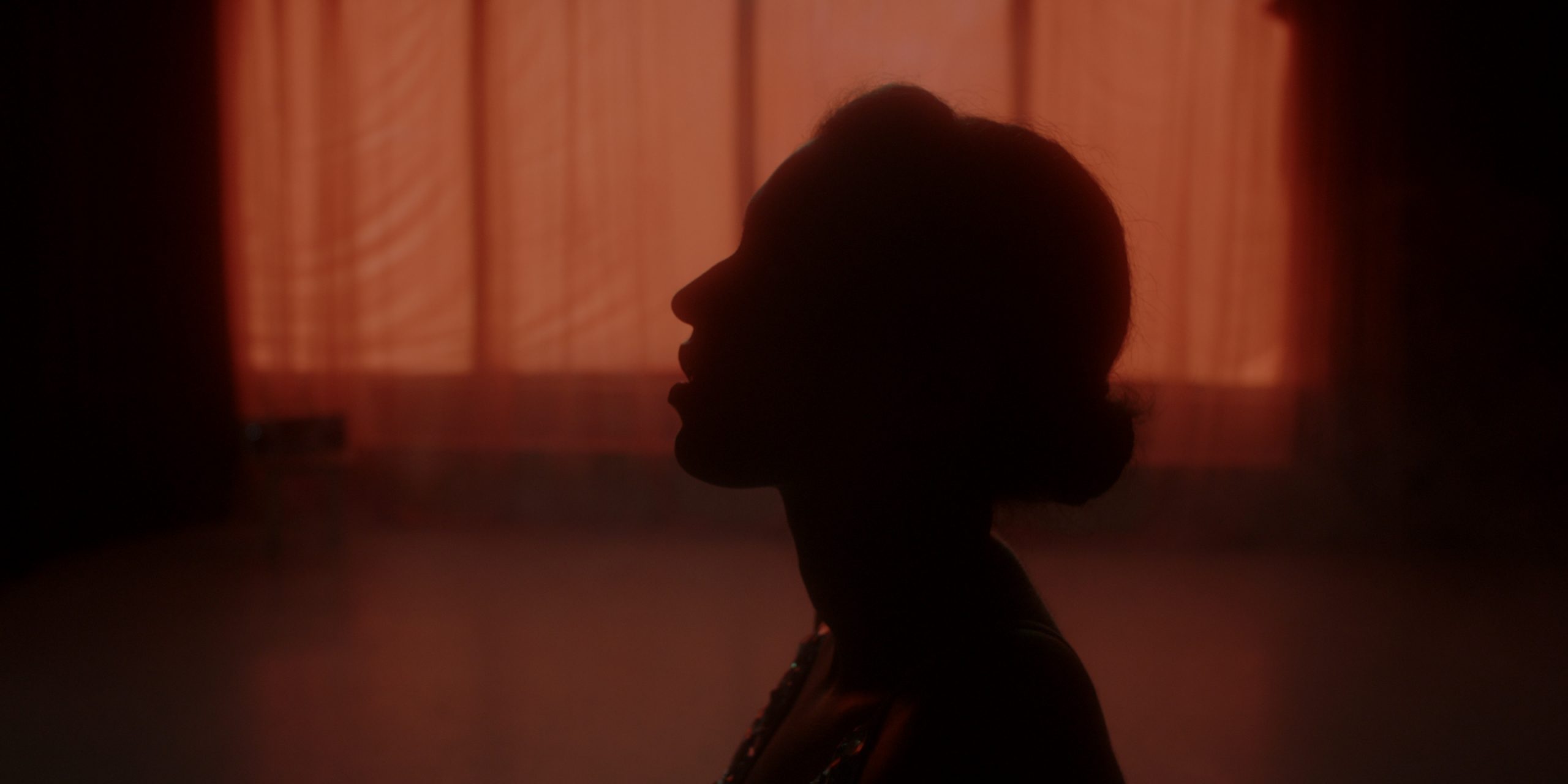
Interviews with some of the artists in Selected X appear below. If you’d like to watch the film programme, click here.
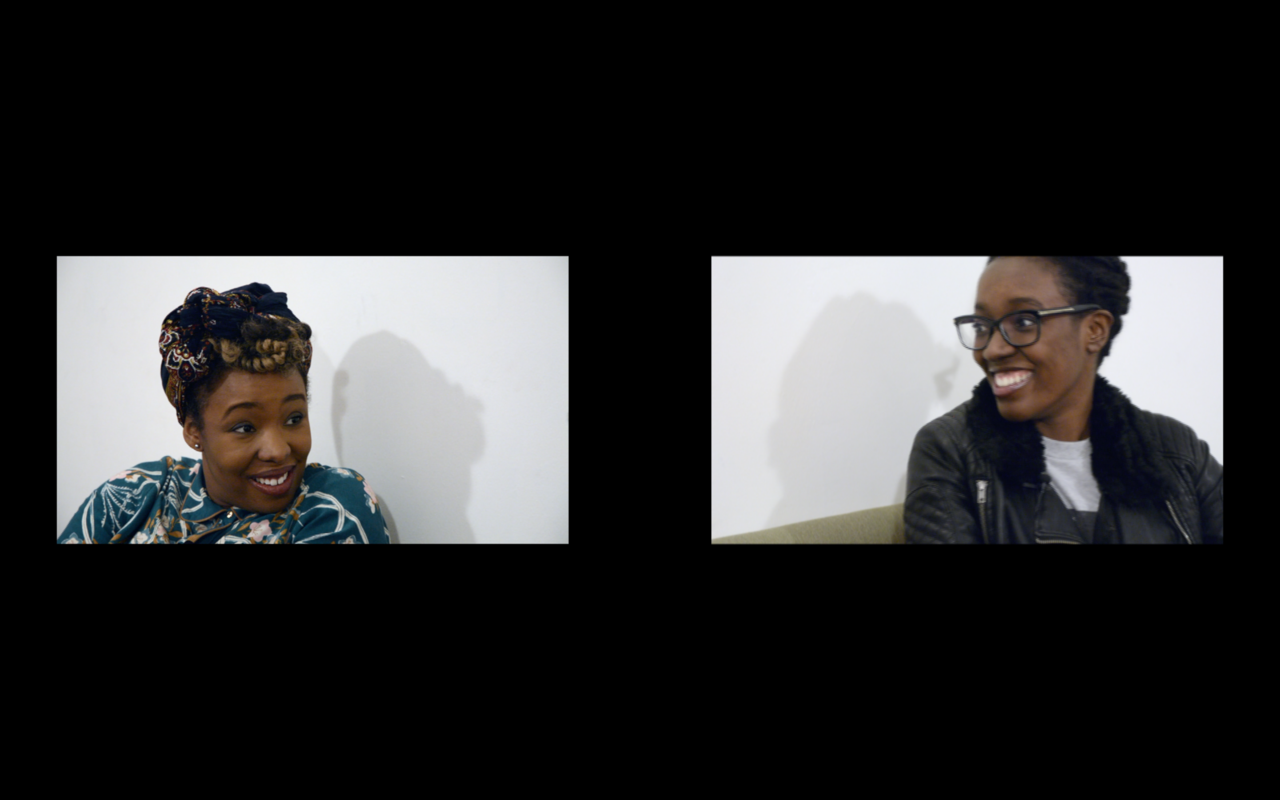
Beverley Bennett‘s interview (Bennett’s film Amine is in Selected X):
What was it that inspired your film?
In 2016 the pioneering writer Claudia Rankine pronounced that ‘the invisibility of black women was astonishing.’ That year I was approached to apply for a commission based on the Greek tragedy of Philomela. While the myth has several variations, the general depiction is that Philomela, after being raped and mutilated by her sister’s husband, Tereus, obtains her revenge and is transformed into a nightingale, a bird renowned for its song. Because of the violence associated with the myth, the song of the nightingale is often depicted or interpreted as a sorrowful lament. In nature, the female nightingale is actually mute and only the male of the species sings. The project Philomela’s Chorus is a series of short films centring the removal of the voice namely black womxn.
What do you want viewers to take away from your film? (What do you hope audiences feel or understand – how would you like to affect an audience with your work, and in particular this film?)
I would like the audience to listen to the stories and thoughts that are being generously shared by the womxn on screen, especially the poignant moment between the two siblings. That moment highlights, and conveys, the multifaceted complexities that constitute black womxnhood today. Amine attempts to relay a truth. Paying attention to the complexities within the film allows perceptions to be shattered and the nuanced reality to replace them.
What do you think is most urgent to discuss in art and society at the moment? And do you think artists – including yourself – should be engaging in that or those subjects?
The news is more intensely, politically personal today than it has been in a long time. With the resurgent Black Lives Matter movement, the COVID-19 pandemic and the role of art in pre- and post-lockdown society, I see it as the responsibility of an artist to engage with and discuss the possibilities for future-building inherent in this moment of socio-political rupture. As a black woman in the West, I cannot separate my being in the world from this moment of turmoil. There is an air of urgency to this moment of collective grief – whether it comes from one’s normal daily routine having changed dramatically, from the pressures of working from home, from figuring out a new work / life balance to the other end of the spectrum- losing your job, your home, or watching a news report of another black person being murdered at the hands of the police. The personal grief that comes from not being around friends, from losing family members and not being able to grieve properly as we once would, is added to this. It is the artist’s duty to bear witness to this moment.
What inspirations – film, writing or other media – might be interesting for viewers to look at that have informed your work?
I’m inspired by the other artists within the project Philomela’s Chorus – Jay Bernard, NT and Phoebe Boswell.
—
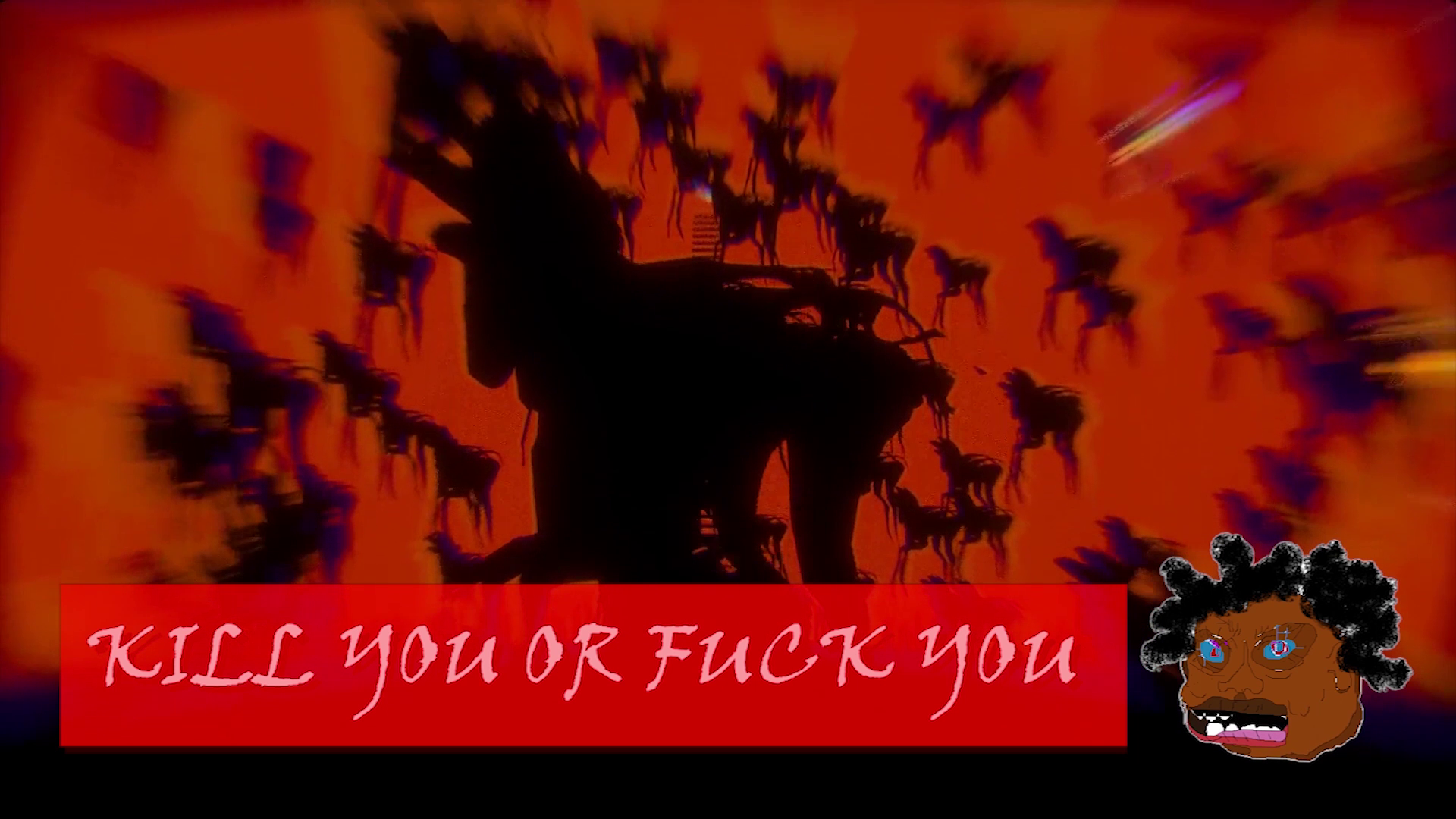
Danielle Braithwaite-Shirley‘s interview (Braithwaite-Shirley’s film TRANS-PORT ME is in Selected X):
What was it that inspired your film that is in the Selected 10 programme? (Where did the idea come from, what made you want to make the film?)
At the of making this video I was dealing a lot with being and feeling unsafe in public. At the time and still now I was not at all passing. My thoughts often would dream that I would be allowed to travel in public without having to avoid the stares and insults and general graphic violence. I felt like a demon. That all the power that I had got from living my truth was something others saw as pure evil.
So, this film is part archiving my wish to empower myself while travelling as well as trying to capture what it is like to travel while looking trans.
What do you want viewers to take away from your film? (What do you hope audiences feel or understand – how would you like to affect an audience with your work, and in particular this film?)
I want my trans audience to feel like their experience is heard. So that it will not be forgotten and hopefully this film can hold on to some of it.
I am hoping the karaoke element of the film will make people think about what it means to say some of the words out loud with the identities they themselves have.
What do you think is most urgent to discuss in art and society at the moment? And do you think artists – including yourself – should be engaging in that or those subjects?
The Erasure of Black people. We owe so much of our culture to Black People; to Black women; to Black Trans bodies.
So much has been taken from us and in that processed we are removed from it.
Blackness is often something removed from the things we produced.
We need to stop erasing Black people. STOP ERASING BLACK TRANS PEOPLE. It’s not about making work about it; it’s about listening to what we need. What we say, what we have been saying.
It’s to know that you, the person reading this, has contributed to the erasure of someone else.
It’s about not thinking you can be a hero, that one good deed or thought is enough. It’s about asking what those who have been erased need and trying to help that be delivered. Sometimes that means handing over all aspects to Black People for us to run things ourselves. If you want to champion us it needs to be for us only without anyone else in that equation.
What inspirations – film, writing or other media – might be interesting for viewers to look at that have informed your work?
The game “Magic wand” by TheCatomites
Kodak Black
Travis Alsbanza
EVAN EFEKOYA
EBUN SODIPO
ms.carriestacks
—
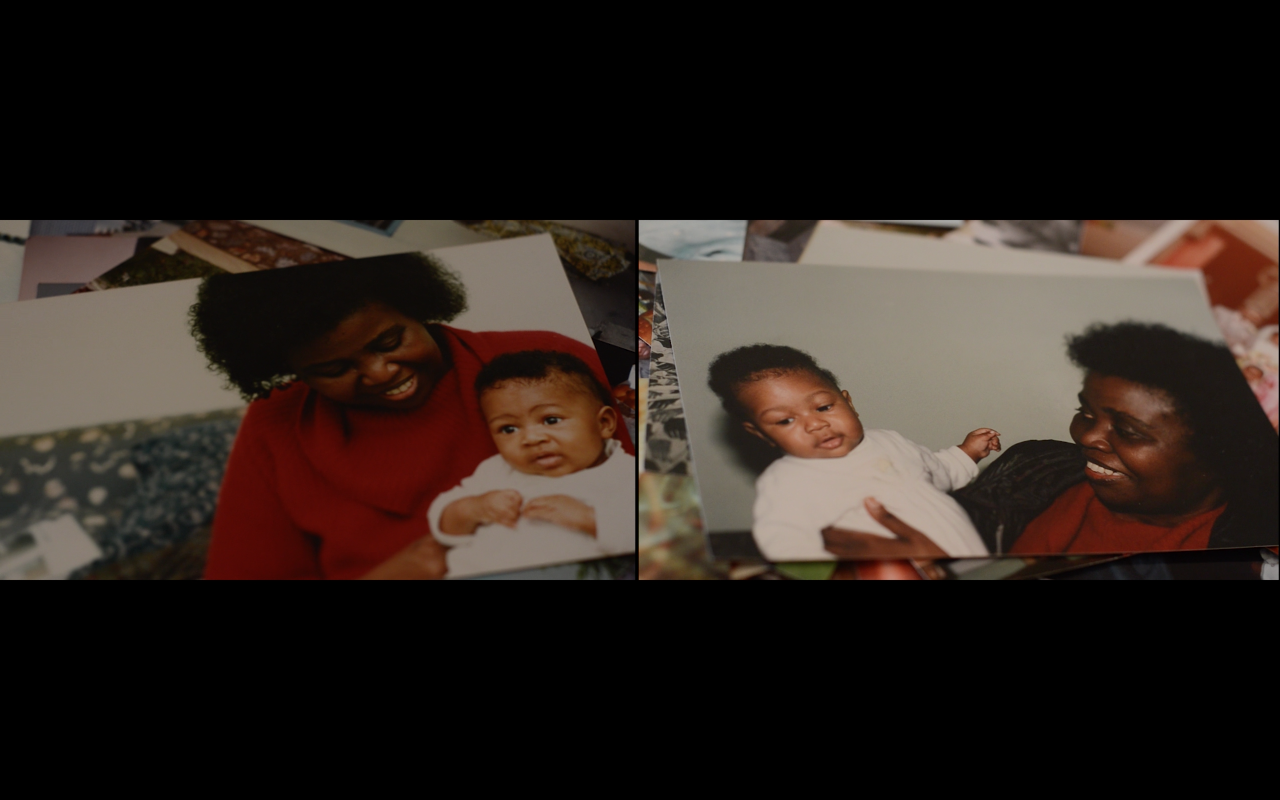
Rabz Lansiquot‘s interview (Lansiquot’s film Nyansapo is in the Selected X programme):
What was it that inspired your film? (Where did the idea come from, what made you want to make the film?)
I made Nyansapo during my MA documentary course in 2017, which was pretty fraught and left me with almost no guidance on technique, or any theory that related to Black filmmakers. Because of that I decided to just use the facilities to make something that felt useful or even just interesting to me so I decided to document my grandma teaching me to cook Jollof rice, mainly so I’d have a document of that process (it’s pretty hard to get perfect, especially for us diaspora kids) but also to ensure there was something documenting my grandma telling her story. I’d recently seen Martina Attille’s Dreaming Rivers for the first time and it inspired me to foreground the experience of a migrant Black woman, who has spent the majority of her life in this country. It just felt right to do it through food and conversation, a ritual my grandma and I used to undertake every Sunday.
What do you want viewers to take away from your film? (What do you hope audiences feel or understand – how would you like to affect an audience with your work, and in particular this film?)
I’m not sure I really had viewers in mind when I made it, but since then I’ve shown it in a number of contexts and the nicest thing has been hearing other people reflect on the legacies of their own elder family members. We so often overlook or take for granted these Black women in our lives, we forget to ask them what they think or how they feel, and we often don’t realise how much they know and have seen, so I guess I hope the film reminds people of that.
What do you think is most urgent to discuss in art and society at the moment? And do you think artists – including yourself – should be engaging in that or those subjects?
I’m profoundly uninterested in work that doesn’t acknowledge the state of our world. I don’t think there’s such thing as being apolitical so I think if artists aren’t exploring politics in some way, it’s an indication of what their politics really are. There’s so much that needs unpacking and dismantling and artists should be at the forefront of imagining and trialling new forms of thinking. My newer work confronts anti-black violence in a way that Nyansapo doesn’t, but I don’t think all artists should make work about that. I think, for some, stepping back and allowing space for other voices to be heard (and paid) is the most radical and necessary thing.
What inspirations – film, writing or other media – might be interesting for viewers to look at that have informed your work?
The writings of Tina Campt, Saidiya Hartman and Dionne Brand inform my work significantly, and the films of Cauleen Smith.
—
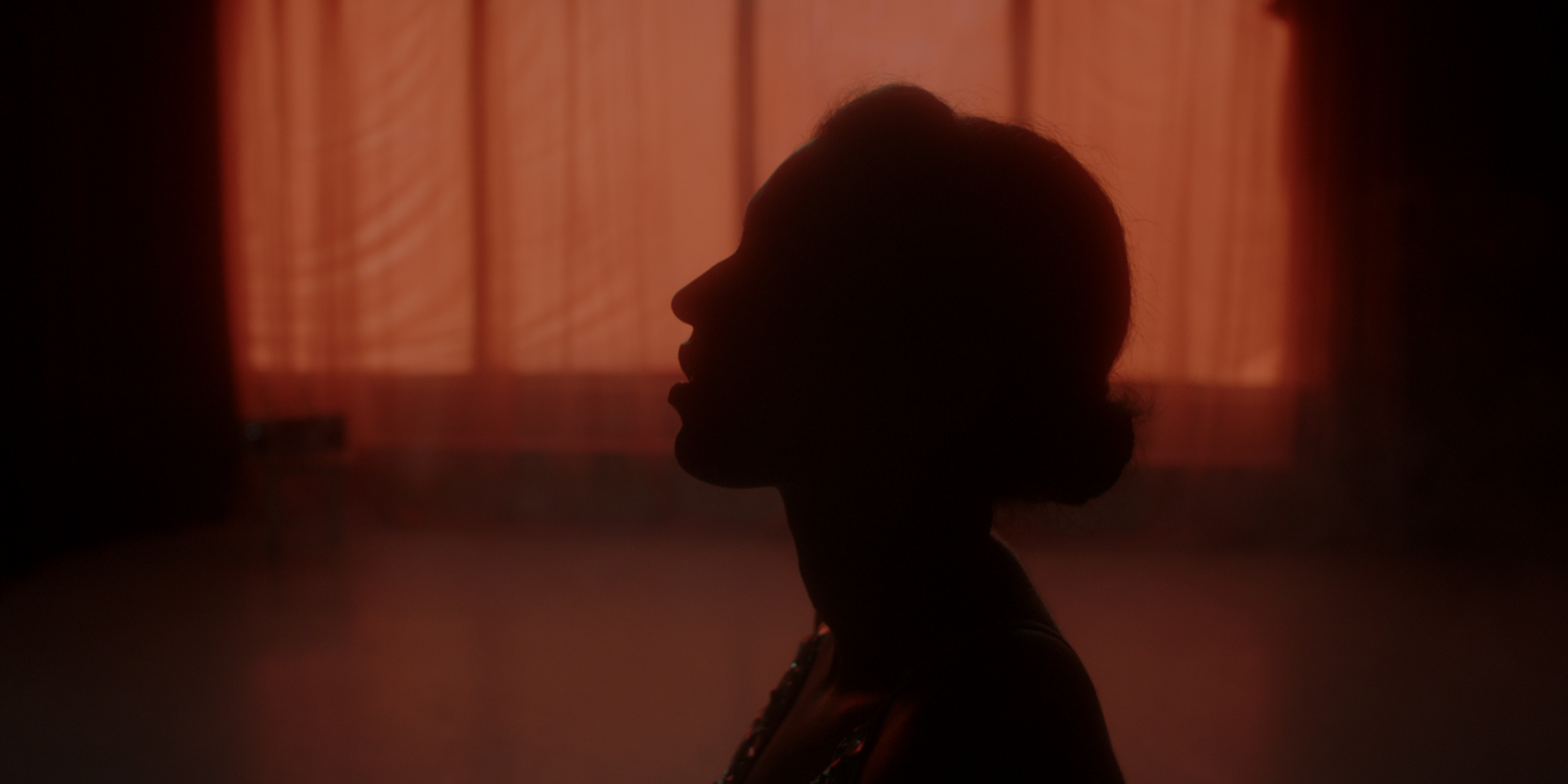
Jennifer Martin‘s interview (Martin’s film TEETH is in the Selected X programme):
What was it that inspired your film? (Where did the idea come from, what made you want to make the film?)
Former Home Secretary Amber Rudd wrote, ‘Illegal and would-be illegal migrants and the public…need to know that our immigration system has “teeth”.’ The letter written to the then Prime Minister Theresa May in January 2017, was leaked at the height of reporting on the Windrush Scandal in April 2018 by The Guardian. The language Rudd used seemed eerily fitting, mirroring what it can feel like to be an immigrant in the UK under a system that wants to consume you, churn you up, and spit you out, somewhere, elsewhere.
What do you want viewers to take away from your film? (What do you hope audiences feel or understand – how would you like to affect an audience with your work, and in particular this film?)
There were a lot of things I hoped would be intuited, embodied things that weren’t for every viewer to grasp. I never aim to educate or make an audience understand. One of the broad notions that the work takes as a given is that the immigration system is broken at every level. The system has been augmented in ways that unnecessarily complicate and obfuscate the process. In the case of the spousal visa, immigration ultimately becomes the entanglement of love, power, and administration.
What do you think is most urgent to discuss in art and society at the moment? And do you think artists – including yourself – should be engaging in that or those subjects?
It’s been vital for me to control and consider what framework ‘TEETH’ is included in. For many British people, Brexit was one of the most significant investments and attention paid to migration. The already broken and oppressive immigration system became increasingly unscalable and monetised under Theresa May’s helming of the Home Office from 2010. As much as ‘TEETH’ is about the UK spousal visa, it is also about the shuttering of the post-study visa during May’s tenure. I more generally seek to question citizenship and belonging through a racial lens, as we should all understand that the metric of citizenship is infinitely retractable and chimeric for Black people in particular. The attention paid to Brexit and its incorporation into art world discourse and events cycle is telling in considering how immigration/migration was present in an art context beforehand, and especially the scale of platforming immigration issues, lived impositions, and artists who experience immigration processes.
What inspirations – film, writing or other media – might be interesting for viewers to look at that have informed your work?
The Wellcome Collection exhibition Teeth (2018) provided scope for in-depth study of the history of teeth in the UK, and encounter with the ephemera part and parcel of that history. Equally, the publication The Smile Stealers: The Fine and Foul Art of Dentistry (2017), by Richard Barnet, which inspired the Wellcome Collection exhibition, was a formative source of historical background.
In addition to exploring teeth in the context of British history and hostile policy, my research was equally concerned with the subject of love. What’s Love (or Care, Intimacy, Affection) Got to Do with It? (2017) published by e-flux journal and Sternberg Press was invaluable as a critical source covering a wide range of reflections on the subject of love. For all the variety of expressions and judgments on love, there were gaps between the love I was researched and the love platformed in the publication. I located space and tension within these gaps and to write responsively.
The choreographic process was an intense collaboration between artist/choreographer Alexandra Davenport and me. I compiled a list of choreographic numbers to focus on in terms of style, expression, gesture, and cinematography. It was an assortment of dances from the awkwardness of Save the Last Dance (2001), to the energy of Whitey’s Lindy Hoppers Hellzapoppin’ (1941), the coordination of House Party (1990), and the drama of Dirty Dancing (1987). My favourites included the Top Hat (1935) dance ‘Heaven’ with Fred Astaire and Ginger Rogers and The Band Wagon (1953) ‘Girl Hunt Ballet’ with Cyd Charisse and Astaire.
—
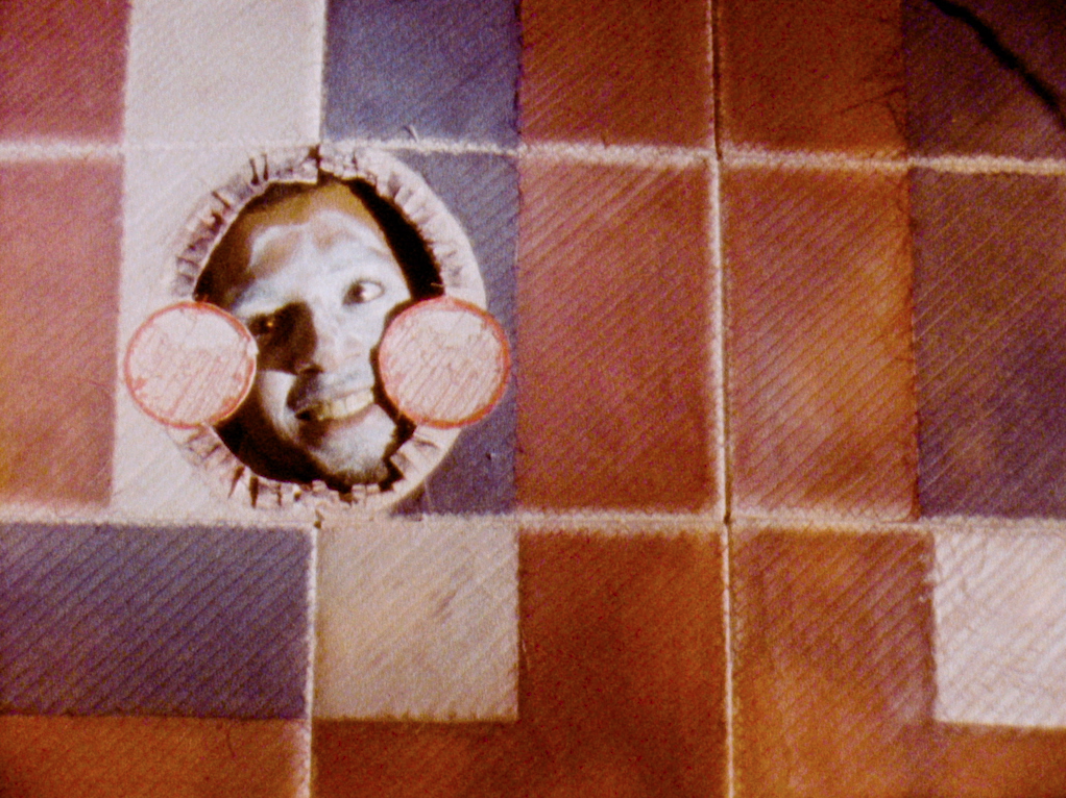
Tanoa Sasraku‘s interview (Sasraku’s film O’ Pierrot is in the Selected X programme):
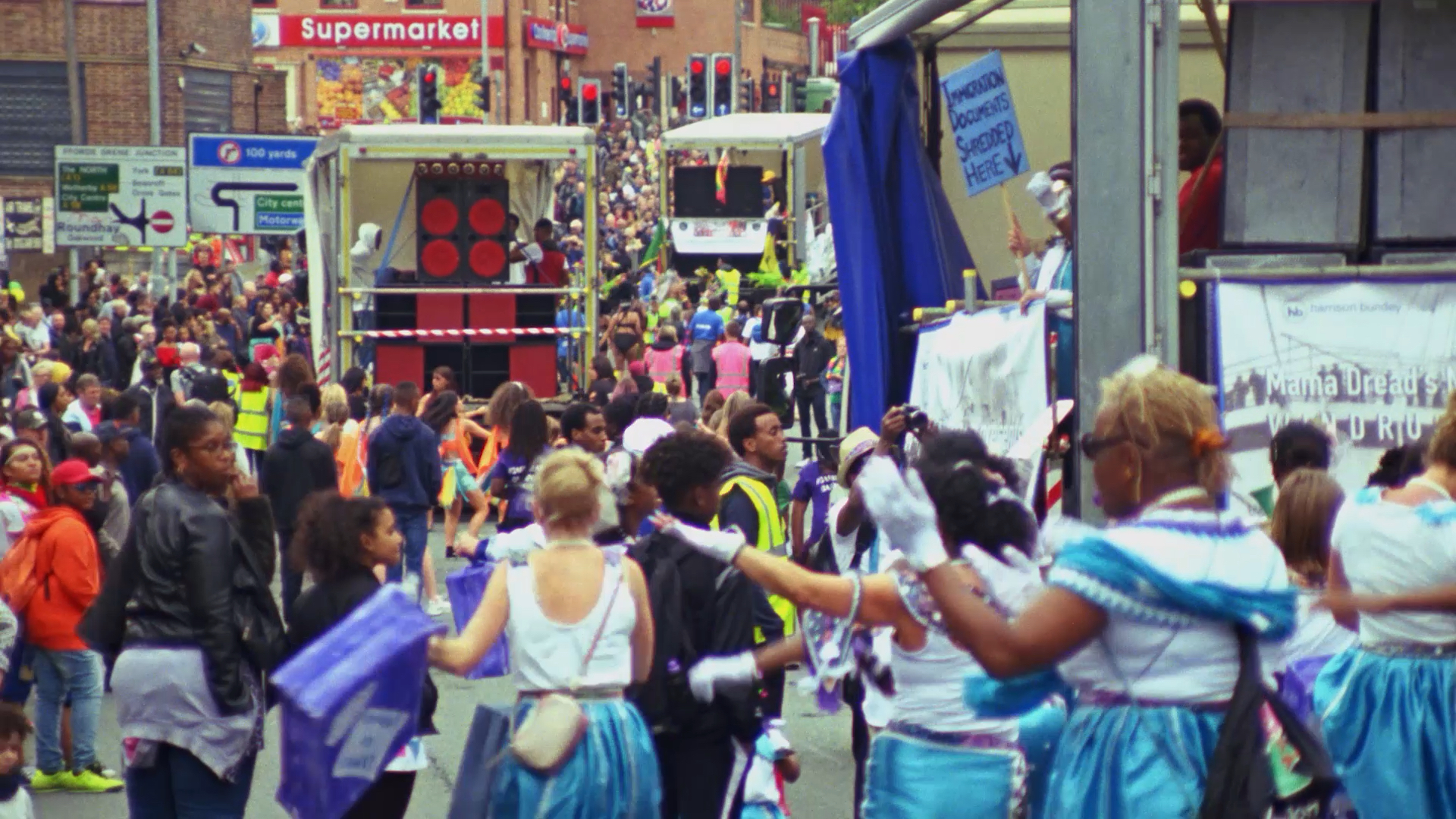
Rhea Storr‘s interview (Storr’s film A Protest, A Celebration, A Mixed Message is in the Selected X programme)
What was it that inspired your film?
A Protest, A Celebration, A Mixed Message was produced in order to explore the political power of carnival and the way in which carnival, a representation of Black culture, circulates within the UK. Carnival is both absorbed into the cultural mainstream and is a form of resistance or affirmation of Caribbean community. I wanted to consider who has power and how forms of control play out through the aesthetics of carnival. The physical occupation of space for instance, is similar to a protest march.In addition, the film is autobiographical- I appear in a costume inspired by Junkanoo, a celebration of the Bahamas. As a mixed-race woman I wanted to question or complicate simplistic understandings of ‘identity’ or ‘Black culture.’ I was frustrated at the ease that works which commodify a monolithic viewpoint of Black culture circulate.
What do you want viewers to take away from your film? (What do you hope audiences feel or understand – how would you like to affect an audience with your work, and in particular this film?)
An open-ended conversation on Black Britishness. More specifically, that rural areas do not solely support a white population. I feature in the film in the Yorkshire countryside where I was raised. I am interested in seeing the image of Black bodies in rural spaces and that by making the film, it subverts the notion of ‘English’ Countryside as a racialised space. More broadly that speaking in terms of Black and white is useful and necessary but sometimes enforces an unhelpful binary. For instance, it is important to note that we follow Mama Dread’s Masqueraders in the film. Mama Dread’s play intensely political themes important to Black community, (here it is Windrush Bacchanal) but their membership has both Black and white members.
A line in the film ‘there is no fact of Blackness’ is a reference to Frantz Fanon’s Black Skin, White Masks. The fifth chapter has been translated both as ‘The Lived Experience of the Black Man’ and ‘The Fact of Blackness’. I was interested in the large discrepancy between these two terms and the type of power inherent to an experience treated as fact. In this way the film seeks to show that cultural representation and the physicality of carnival has an important political function that is lived, is experienced, is community forming.
What do you think is most urgent to discuss in art and society at the moment? And do you think artists – including yourself – should be engaging in that or those subjects?
Often the implication of questioning the usefulness or urgency of art as political instrument implies that art cannot be urgent or fulfil some other political goal. Really whether artists can engage with urgent issues depends on the context and purpose of their work. For me, asking how the ‘art world’ might change is a more directed focus. It is important that art institutions and universities produce conditions where Black artists can thrive rather than survive. It is important that we create a discourse around filmmakers’ work whose work might otherwise be marginalised, that Black culture doesn’t take a peripheral place in an artistic canon.
What inspirations – film, writing or other media – might be interesting for viewers to look at that have informed your work?
-Frantz Fanon – Black Skins, White Masks
-Fred Moten – Black and Blur (consent not to be a single being)
-Emily Zobel Marshall, Max Farrar & Guy Farrar, Popular Political Culture and the Caribbean Carnival,
-Angela Chappell, Analysing 43 years of the Arts Council’s funding and supporting of Caribbean Carnival in England,
-Jenn Nkiru – Rebirth is Necessary
-Kevin Jerome Everson – Eerie
—
To watch the Selected X programme, click here.
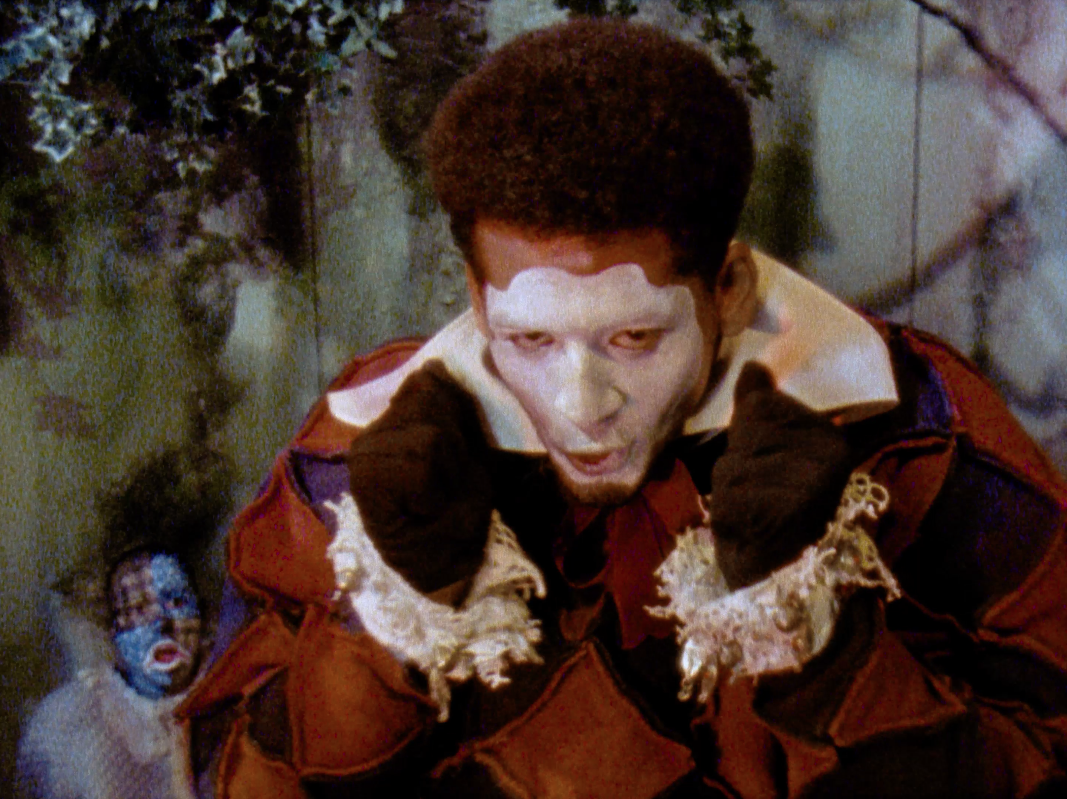

The Selected programme was established 10 years ago with the aims of supporting artist filmmakers to gain greater visibility and to bring new, diverse moving image work to audiences. Each year the artists who are shortlisted for the Film London Jarman Award nominate artists who are earlier in their careers and from those nominations a programme is curated by videoclub and Film London Artists’ Moving Image Network (FLAMIN), which is – usually – shown with venues around the UK. This year the programme was shown online between 6 and 12 July; scroll down for the trailer to get a glimpse of the programme.
The nominators for this year’s programme of Selected (and the artists shortlisted for the Jarman Award in 2019) are: Cécile B. Evans, Beatrice Gibson, Mikhail Karikis, Hetain Patel, Imran Perretta and Rehana Zaman.
Artists for the 10th year of Selected are: Ayo Akingbade, Beverley Bennett, Danielle Brathwaite-Shirley, Rabz Lansiquot, Jennifer Martin, Sharif Persaud & Tim Corrigan, Tanoa Sasraku and Rhea Storr.
Due to COVID-19 and social distancing – we showed the programme free online in 2020; the programme was available between 6 – 12 July – in the Vimeo player below. The programme was shown in partnership with Fabrica Gallery, Lighthouse, Phoenix, Spike Island and Vivid Projects.
Sharif Persaud & Tim Corrigan, The Mask, 2017, 3:45 mins
Tanoa Sasraku, O’ Pierrot, 2019, 13 mins
Danielle Brathwaite-Shirley, TRANS-PORT ME, 2019, 11:49 mins
Rhea Storr, A Protest, A Celebration, A Mixed Message, 2018, 12 mins
Ayo Akingbade, So They Say, 2019, 11 mins
Jennifer Martin, TEETH, 2019, 18:15 mins
Rabz Lansiquot, Nyansapo, 2017, 11 mins
Beverley Bennett, Amine, 2017, 11:29 mins
Selected X trailer:
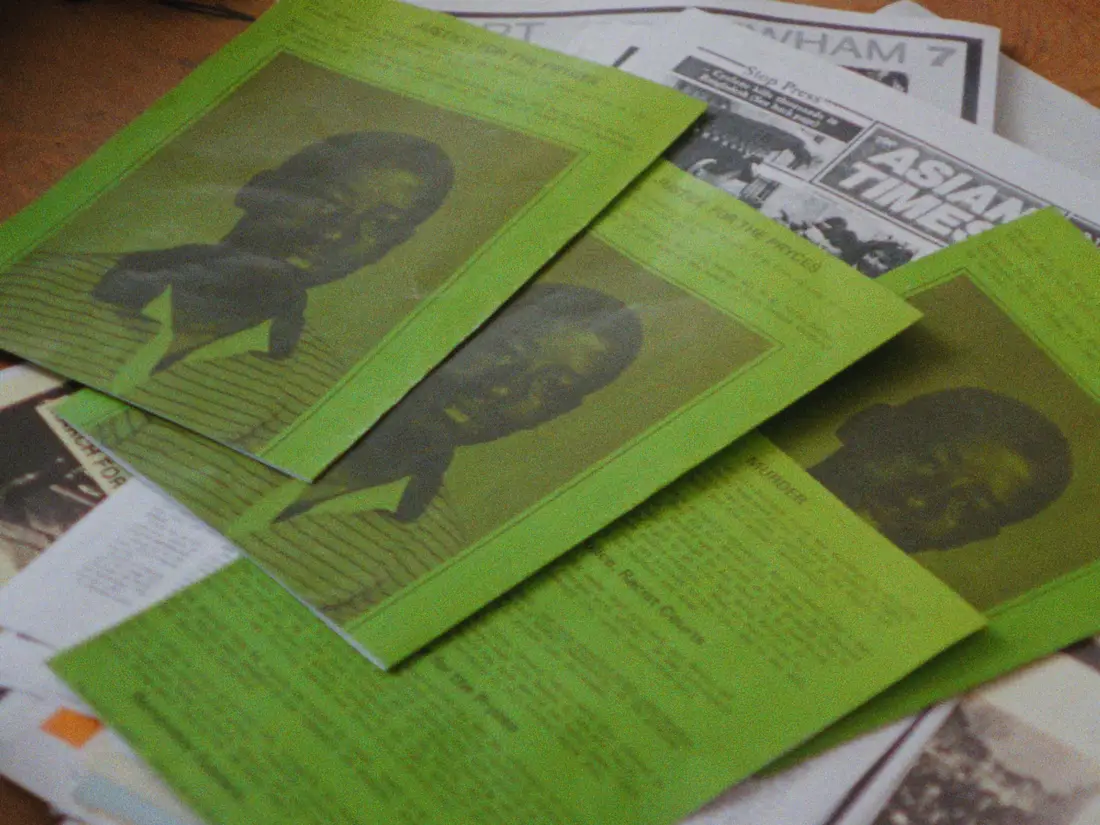
Ayo Akingbade, So They Say, 2019
Set in 1985 and the present day, the film explores and reflects on the often forgotten histories of black and brown community struggle in East London. The legacy of community and activist group, Newham Monitoring Project is spotlighted.
Ayo Akingbade works predominantly with moving image, addressing notions of power, urbanism and stance. Interested in the fluid boundaries between the self and the other, she gathers local and cultural experiences in intimate and playful interpretations.

Beverley Bennett, Amine, 2017
Commissioned as part of the Philomela’s Chorus film series in 2017, Amine is best described as a tapestry of voices. The film reveals the multi-faceted and complex experiences of what it is to be a black womxn in the UK today. Featuring testimonies from black womxn all over the country, the stories of family, friends, friends-of-friends and acquaintances from varying backgrounds and age groups are woven together, intricately. The testimonies come from a series of unstructured, conversational and kitchen table interviews organised by artist Beverley Bennett, about societal perceptions on black womxn as racialised bodies, overdetermined from without in the Fanonian sense. When seen together, the fragments of positive and negative encounters and experiences, and the rainbow of emotions expressed, create a story of vulnerability, pain and joy that is at once liberatory and heartbreaking. The film illustrates how, while the black British female experience is varied in many respects, intergenerational trauma caused by over-determination in a society whose biases are slanted against black womxn, remains a constant.
Beverley Bennett is an artist-filmmaker. Her practice revolves around the perpetual possibilities of drawing, performance and collaborative experiments with sound. Bennett’s work has been shown nationally and internationally; venues include the CinemaAfrica Film Festival, Stockholm (2018), Encounters Short Film Festival, Bristol (2017), Wysing Art Centre, Cambridgeshire (2017) Spike Island (2017), New Art Exchange, Nottingham (2016), National Gallery of Jamaica, Kingston (2016), Bluecoat, Liverpool, (2010). Beverley Bennett lives and works in London, and is a studio holder at Kingsgate Workshop and Trust. She received her MA in Fine Art in 2009.
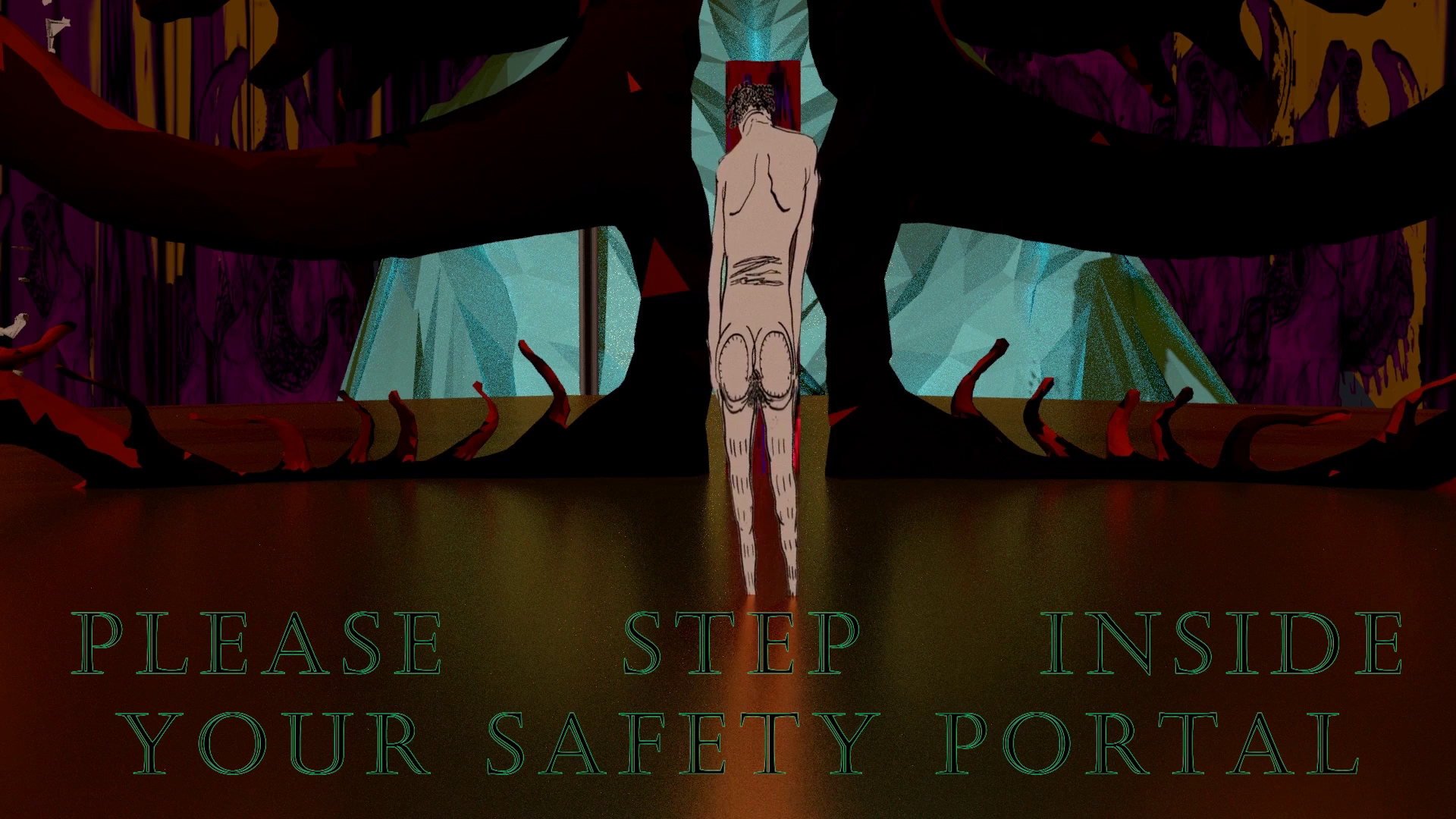
Danielle Braithwaite-Shirley, TRANS-PORT ME, 2019
TRANS-PORT ME is a Karaoke film about trying to remain safe while traveling and failing. It is a recording of how being demonised as a trans body makes you long for safety that always seems just out of reach. A lived experience that makes you long to be able to teleport from location to location to help preserve your life. Originally the video was going to be a film about reclaiming a demonised trans body but instead it failed to do so and fell into questions over what feeling unsafe means.
Danielle Brathwaite-Shirley is an artist working predominantly in animation, sound, performance and Video Games to communicate the experiences of being a Black Trans person. Their practice focuses on recording the lives of Black Trans people, intertwining lived experience with fiction to imaginatively retell Trans stories. Spurred on by a desire to record the “History of Trans people both living and past” their work can often be seen as a Trans archive where Black Trans people are stored for the future.
Throughout history, Black queer and Trans people have been erased from the archives. Because of this it is necessary not only to archive our existence, but also the many creative narratives we have used and continue to use to share our experiences.
Danielle’s work has been shown in Science Gallery, MU, Barbican, Tate ,Les Urbains as well as being part of the BBZ Alternative Graduate Show at the Copeland Gallery.
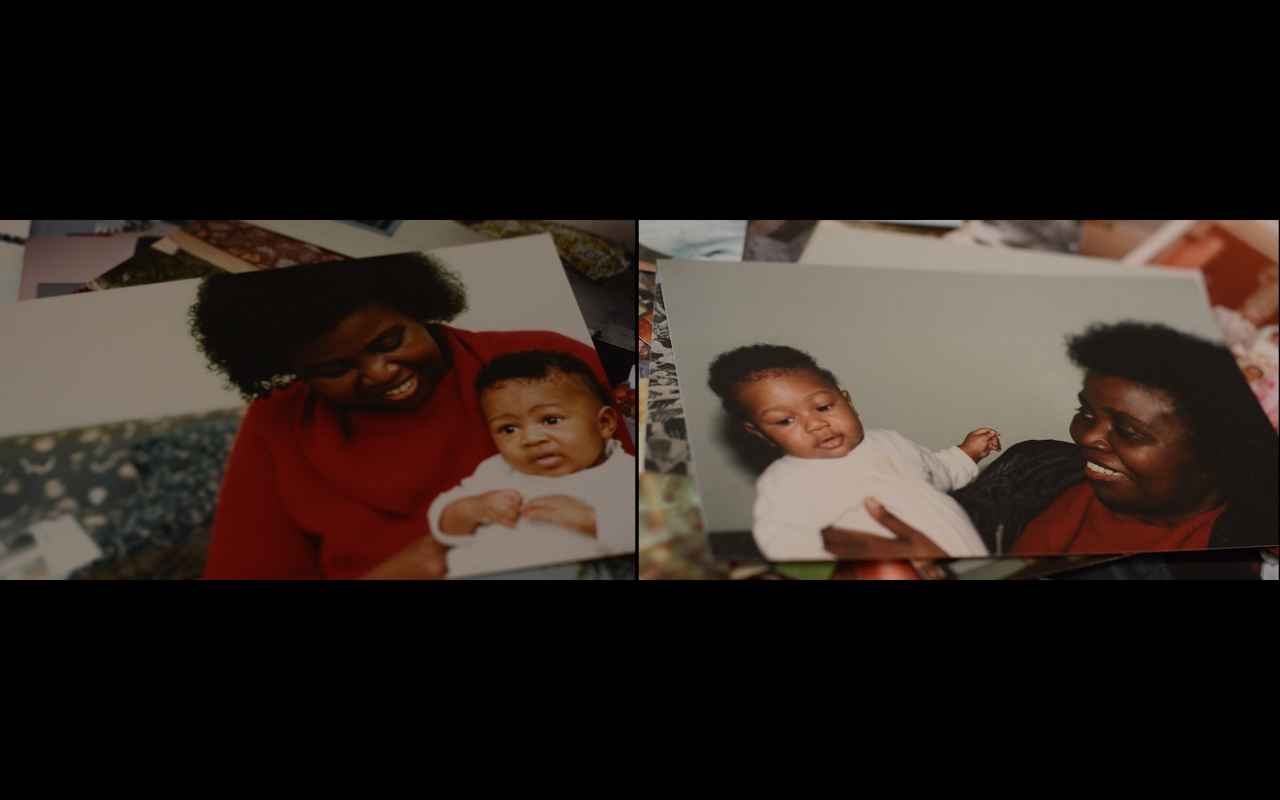
Rabz Lansiquot, Nyansapo, 2017
“While teaching me how to cook Jollof Rice, my grandmother tells me about her experience back home in Ghana as it became the first African country to gain independence from colonial rule, and her life in the UK since moving to London in the 1960’s. This two-channel film explores family history, race, nation, intergenerational relationships, and the often ignored stories of the African women who have lived the majority of their lives in England.
Nyansapo is the Adinkra symbol represented by the “wisdom knot”, a symbol of wisdom, ingenuity, intelligence and patience.”
Rabz Lansiquot is a filmmaker, programmer, curator, and DJ. Alongside Imani Robinson, they are a member of the artistic and curatorial duo Languid Hands who are currently the Cubitt Curatorial Fellows for 2020-21. They were a leading member of sorryyoufeeluncomfortable (SYFU) collective from its inception in 2014. Rabz was Curator In Residence at LUX Moving Image in 2019, developing a public and educational programme around Black liberatory cinema. Their first solo exhibition where did we land, an experimental visual essay exploring the use of images of anti-black violence in film and media, was on view at LUX in Summer 2019, presented alongside a programme of screenings and a study day. They have put together film programmes at the ICA, SQIFF, Berwick Film & Media Festival and were a programme advisor for London Film Festival’s Experimenta strand in 2019 and are on the selection committee for Sheffield Doc Fest 2020. Rabz is also training to deliver workshops in working with Super 8 and eco-processing at not.nowhere, and is a board member at City Projects.
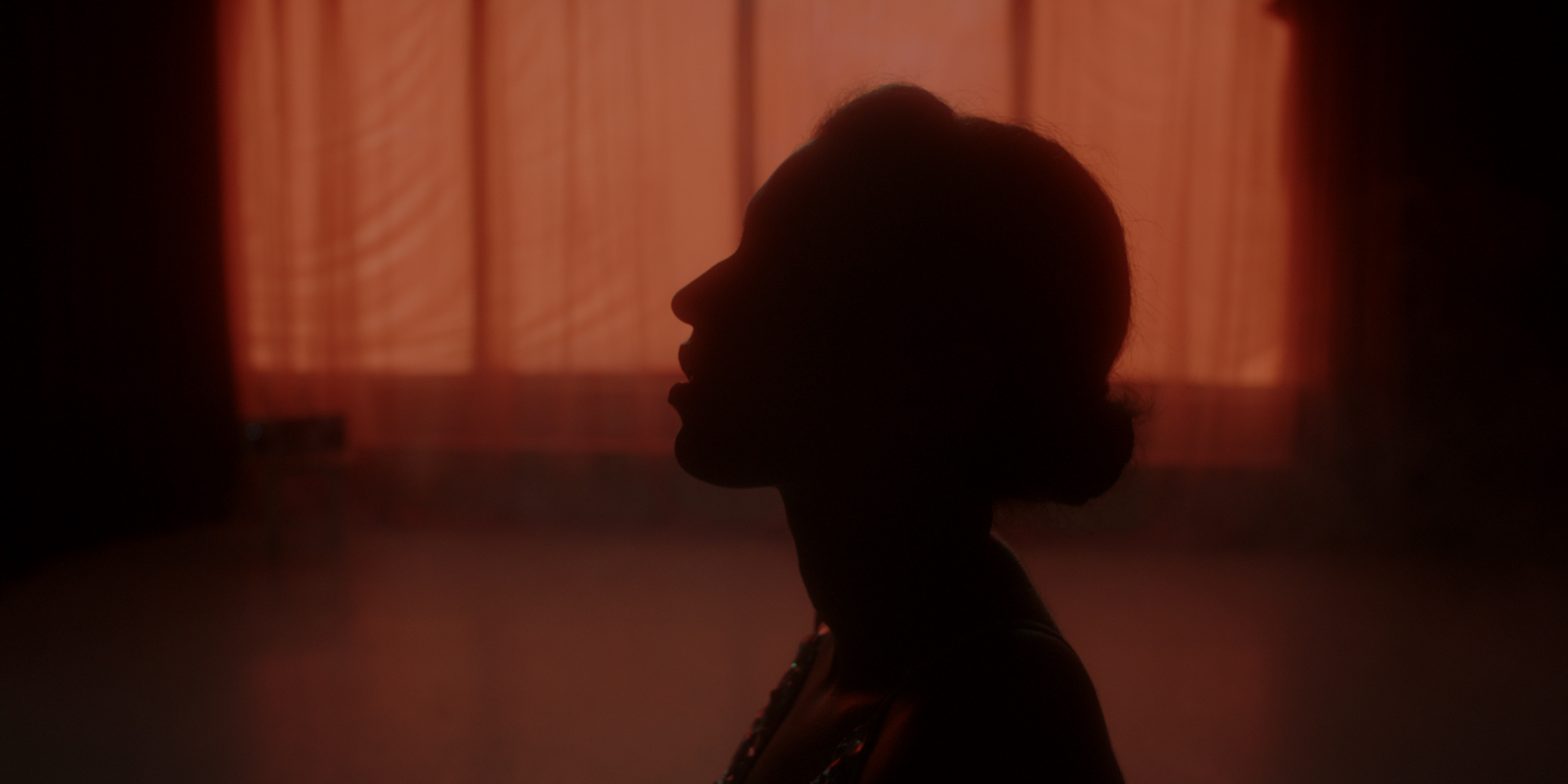
Jennifer Martin, TEETH, 2019
In ‘TEETH’ an eager couple, Charlotte and Myles are interrogated by two Home Office agents about their spousal visa application. They endure a series of assessments that become progressively performative to attest to the legitimacy and acceptability of their relationship.
‘TEETH’ addresses the entanglement of love, power, and administration in the UK spousal visa process. In January 2017, former Home Secretary Amber Rudd wrote, ‘illegal and would-be illegal migrants and the public…need to know that our immigration system has “teeth”’. Her letter, written to then Prime Minister Theresa May, was leaked in April 2018 amid reporting on the Windrush Scandal. Teeth are the bite of the UK immigration system, its violence and desirous devouring.
Jennifer Martin lives and works in London, UK. Martin’s practice spans artists moving image, photography, and installation. Ongoing themes include the performativity of belonging and the instability of images. Recent solo exhibitions and commissions include TEETH, Primary, Nottingham (2019-20); Channel 6, Turf Projects, London (2019); and Britain Been Rotten, Cypher Billboards, London (2019). Recent screenings include 36 Kasseler Dokfest, Kassel (2019); B3 Biennial, Frankfurt (2019); EMAF No. 32, Osnabrück (2019). She is a graduate of the Royal College of Art (2018) and Slade School of Fine Art (2013). Martin was selected for the 2018 Stuart Croft Foundation Education Award, FLAMIN Fellowship 2019/20, was artist-in-residence at Kingsgate Workshops and selected for Hospitalfield’s Residency 2020. She is a co-director of not/nowhere, an artist workers’ cooperative run by Black artists and artists of colour, focusing on photochemical film, audio, and digital practices.
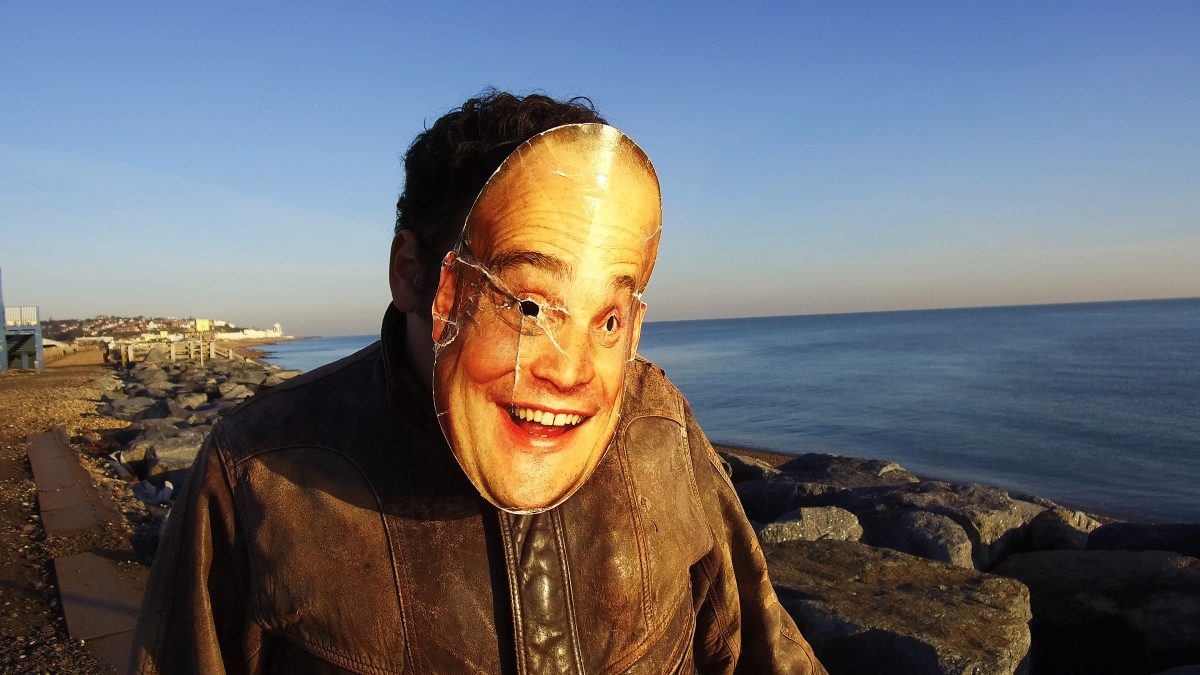
Sharif Persaud & Tim Corrigan, The Mask, 2017
The Mask is a short film about autism and identity featuring writer and director Sharif Persaud. As he journeys along a coastal footpath, Sharif describes what it means to have autism while all the time wearing his favourite celebrity mask. He finally arrives at his destination where he comes face to face with his alter-ego.
Sharif Persaud has a long association with Project Art Works and has been a key contributor to much of PAW’s recent output, including several film projects. Placing himself at the centre of his work Sharif uses different art forms; video, photography, drawing, painting and printing, to reflect the narrative of his life. Through his work we see the world from his idiosyncratic perspective, the different forces that have impacted him in the past and how these shape his thinking about the future.
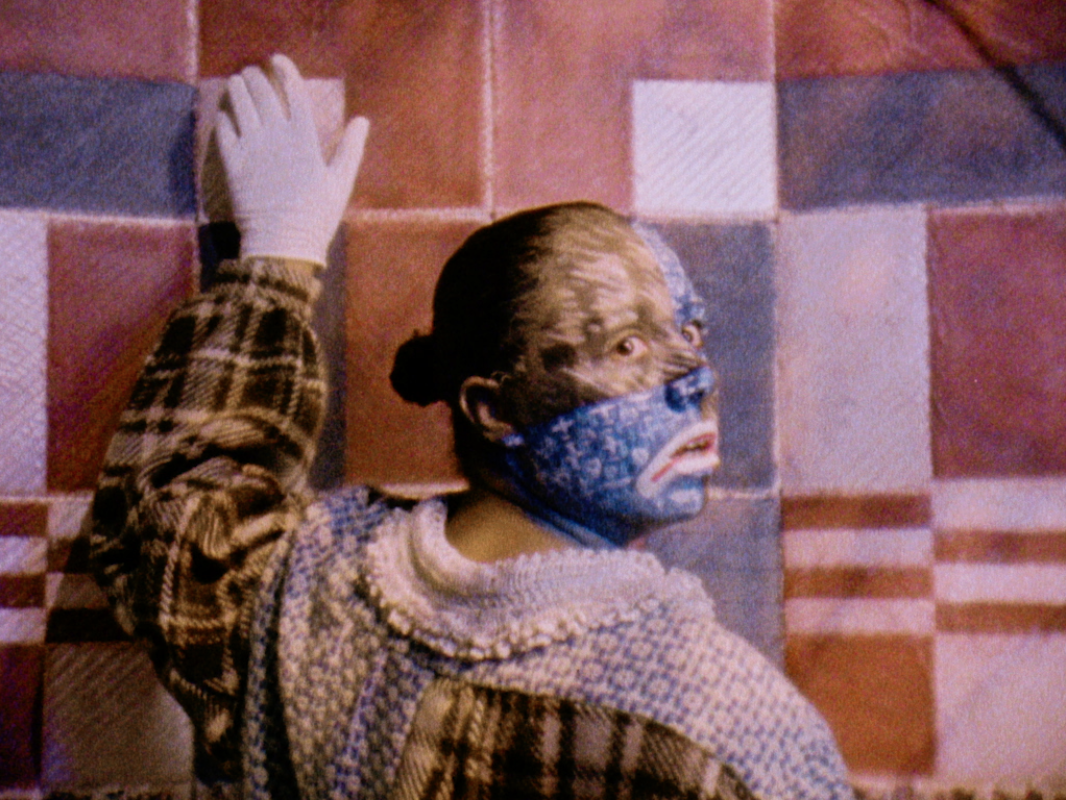
Tanoa Sasraku, O’ Pierrot, 2019
Employing the narrative of Pierrot the Clown and the aesthetic of Kenneth Anger’s pioneering avant-garde, queer film Rabbit’s Moon, O’ Pierrot explores the quest for British identity from a lesbian, mixed-race, British perspective.
The life goal of Pierrot Mulatto (played by the artist) is to catch a giant sycamore seed that spins down every day from the arms of Harlequin Jack, a crazed black man in whiteface, driven mad by his own quest for British acceptance. Jack toys with Pierrot throughout the story, performing a satirical essence of white British sensibility whilst referencing early minstrel troupes’ caricatures of the post-slavery, black populace. Mixed-race Pierrot is encouraged to strive for her ‘white potential’ whilst battling rejection, rage, and the bending of time amidst the English countryside.
The story of the black, British experience: one driven by misplaced loyalty, melancholy, and historical reprise stands as a mirror to the traditional tale of Pierrot’s existence under Harlequin’s thumb. This forms the narrative pillar for Sasraku’s semi-autobiographical fairytale, shot on 8mm film, whilst the script is built upon a colliding of verses from the Jim Crow-era song ‘Jump Jim Crow’ and lesser-known passages from the British National Anthem.
Tanoa Sasraku works with themes examining the intersections of her identity as a young, mixed-race, gay woman and the endeavour to draw these senses of self together as one in 21st century England.
Sasraku is based in London, England and her practice shifts between filmmaking and flag-making.
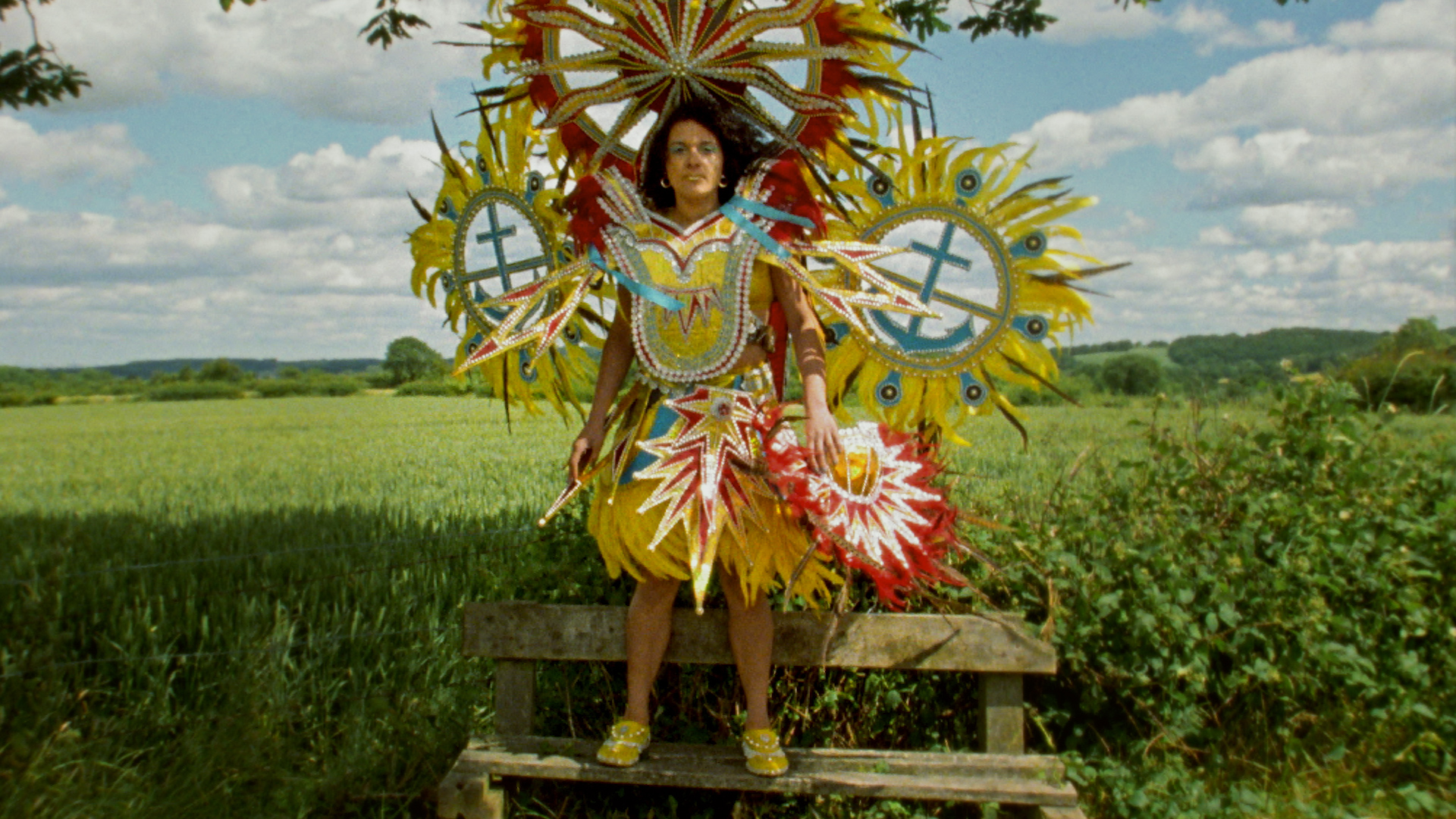
Rhea Storr, A Protest, A Celebration, A Mixed Message, 2018
Celebration is protest at Leeds West Indian Carnival. A look at forms of authority, A Protest, A Celebration, A Mixed Message questions who performs, who spectates and the power dynamics therein. Following Mama Dread’s, a troupe whose carnival theme is Caribbean immigration to the UK, we are asked to consider the visibility of Black bodies, particularly in rural spaces.
Rhea Storr is an artist filmmaker who explores the representation of Black and mixed race cultures. Masquerade as a site of protest or subversion is an ongoing theme in her work. So too, is the effect of place or space on cultural representation. On occasion she draws on her own rural upbringing, and British Bahamian identity. Rhea Storr often works in 16mm film; she considers that analogue film might be useful to Black artists, both in the aesthetics it creates and the production models it facilitates. She considers the ways in which images fail us or are resistive.
Recent screenings include Filmforum MOCA, Los Angeles, Chicago Underground Film Festival, European Media Art Festival, Berwick Film and Media Artist Festival, Hamburg International Short Film Festival, Kassel Doc Fest, Alchemy Film and Media Art Festival (programmer) and National Museum of African American History and Culture. Recent exhibitions include Somerset House and Artist Film International (including Whitechapel Gallery London, Bonniers Konsthall, Sweden and Istanbul Modern).She is the winner of the Aesthetica Art Prize 2020 and the inaugural Louis Le Prince Experimental Film Prize.
Selected is produced by videoclub and Film London Artists’ Moving Image Network. Supported by Arts Council England and Film London. Thanks to LUX for their support.
Film London Artists’ Moving Image Network (FLAMIN) supports London-based artists working in moving image, working in partnership to deliver a comprehensive programme including production award schemes, regular screenings, talks and events, as well as the prestigious annual Film London Jarman Award.



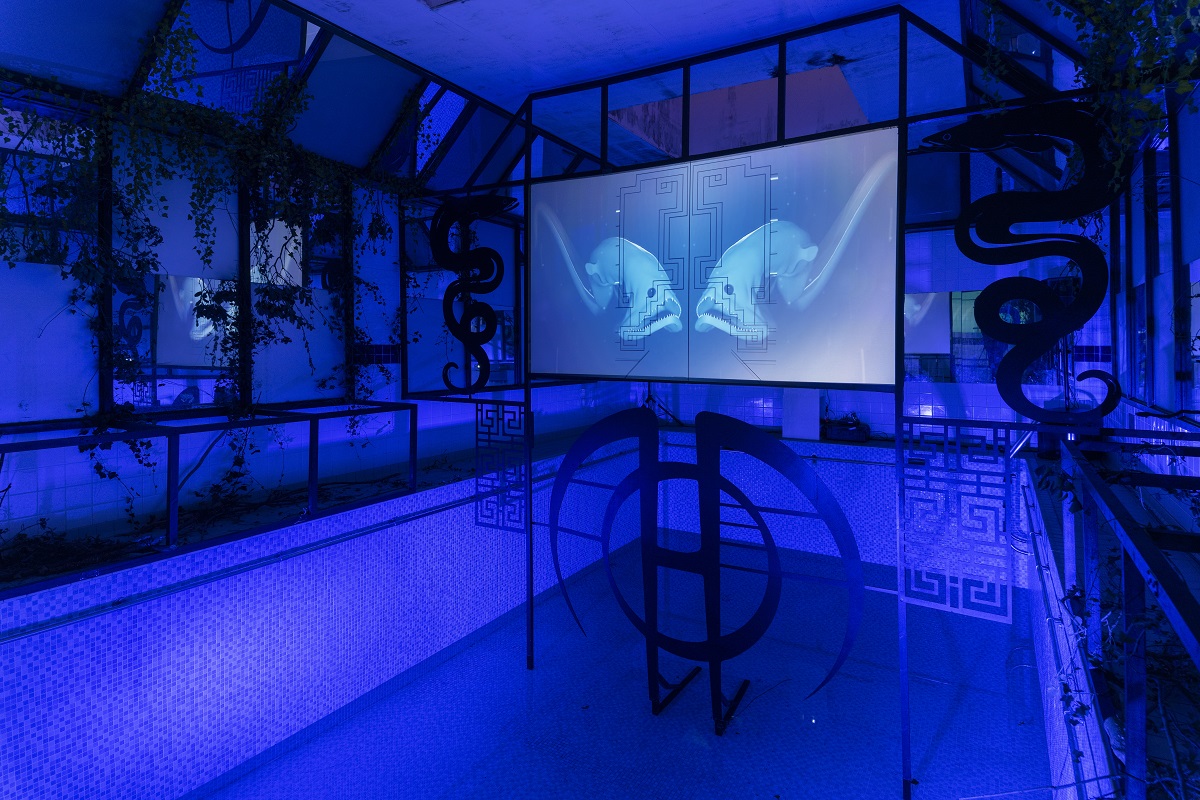

More info: https://www.joeyholder.com/semelparous
Thanks to support from Arts Council England, we now have the resources to support four artists to participate in building a digital residency space with us.
Over the next five months we’re going to develop an accessible, purpose-built digital residency platform, collaborating with four artists to create a space that supports their practice, while engaging audiences with their work.
The aims of the residency space are to provide an accessible space for artists and audiences who may be limited by resources or physical barriers from participating; to support artists to make new work and to engage with audiences (through talks, workshops, events); to produce a platform that reflects the opportunities provided by a physical residency – skills sharing, new contacts, critical development, space; and to offer an exhibition platform for artists’ work in the UK and internationally.
To do this we’ll be building the residency space with artists, a web developer and an access specialist, reviewing and reflecting on the space as it is developed.
The resident artists who’ll be working with us are:
Seecum Cheung current work is an ongoing series of films based upon interviews and encounters initiated by the artist with leading specialists in the field of right-wing radicalism, human rights and activist groups, politicians, and affected citizens. Her films include collaborations and commissions by NHS England, brap human rights equality charity, and SBS Public Broadcasters.
Joey Holder‘s work raises philosophical questions of our universe and things yet unknown, regarding the future of science, medicine, biology and human-machine interactions. Working with scientific and technical experts she makes immersive, multimedia installations that explore the limits of the human and how we experience non-human, natural and technological forms.
Daniel Locke is an artist and graphic novelist based in Brighton, UK. Since 2013 much of his work has been informed and shaped by the discoveries of contemporary science. He’s worked with Nobrow, Arts Council England, The Wellcome Trust and The National Trust.
Romily Alice Walden is a transdisciplinary artist whose work centres a queer, disabled perspective on the fragility of the body. Their practice spans sculpture, installation, video, curation and printed matter, all of which is undertaken with a socially engaged and research-led working methodology. Recent work has shown at BALTIC Centre for Contemporary Art: Newcastle, Hebel Am Uffer: Berlin, SOHO20: New York and Tate Exchange: Tate Modern: London. In 2019 Walden was a Shandaken Storm King resident, and will be resident at Wysing Arts Centre in 2020. They work both individually and collectively as a member of Sickness Affinity Group; a group of art workers and activists who work on the topic of sickness/disability.
We are aiming to have a prototype space by the end of July/early August; how this will be and look, we’re not sure yet. Join our mailing list to keep up to date or follow us on Facebook, Instagram or Twitter.
